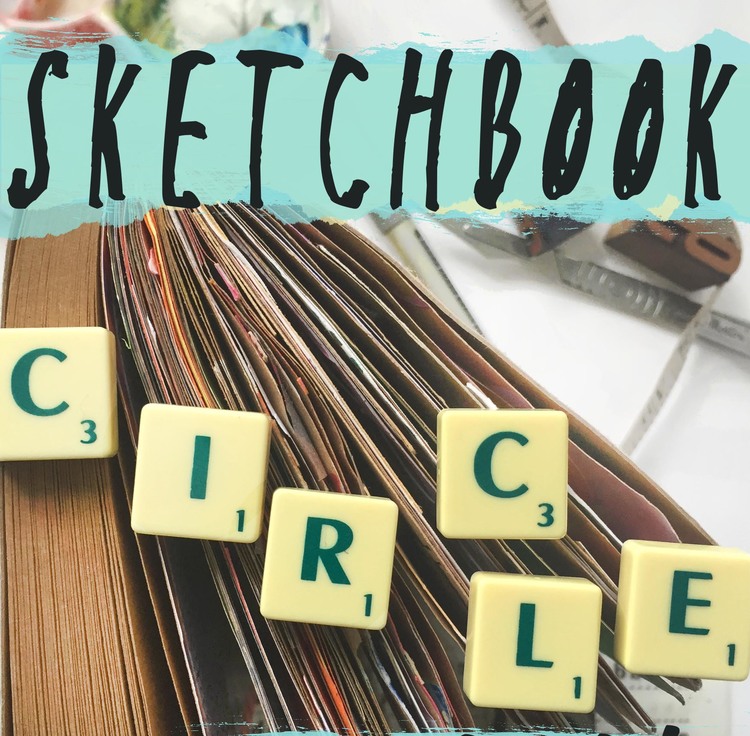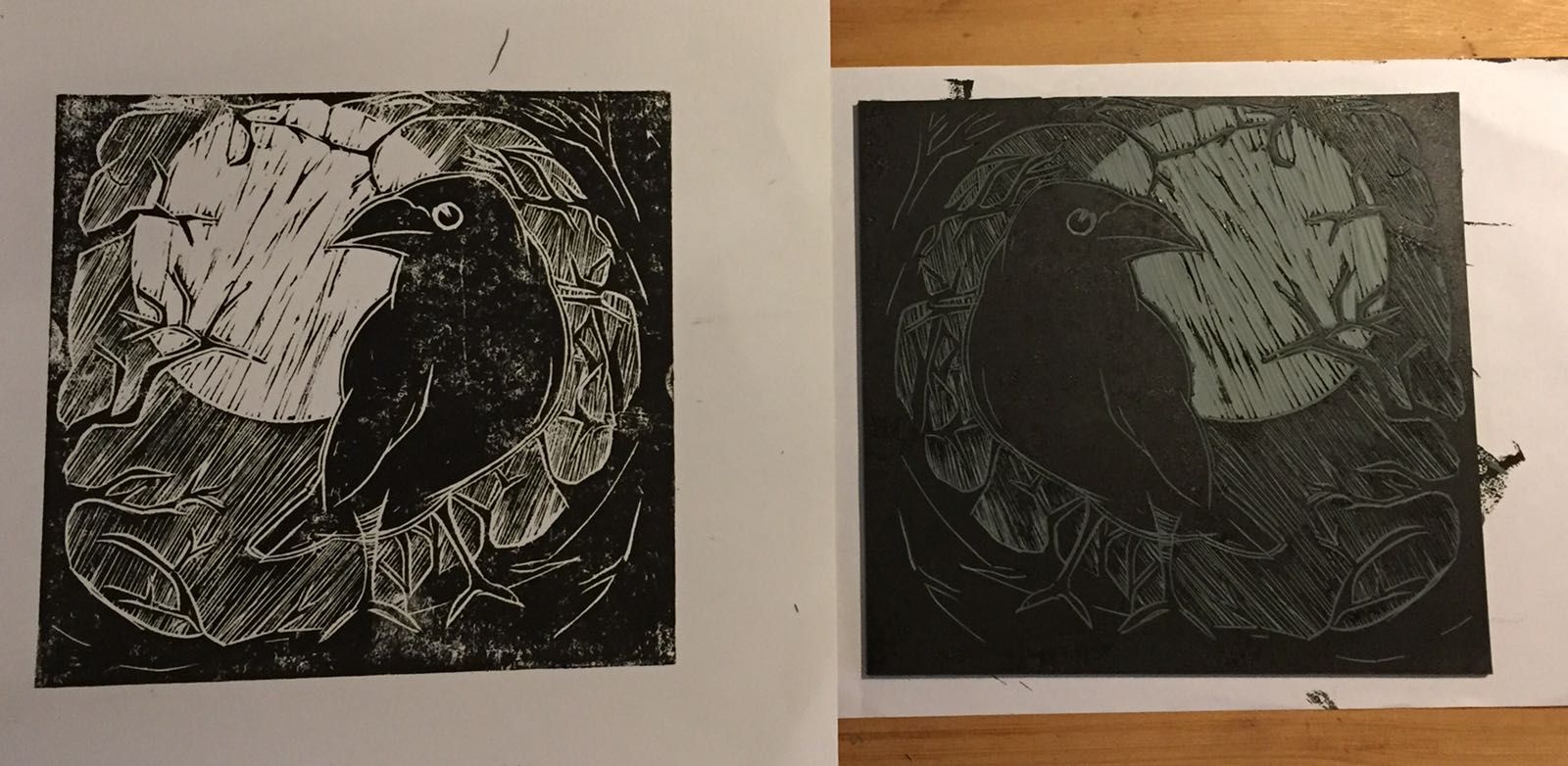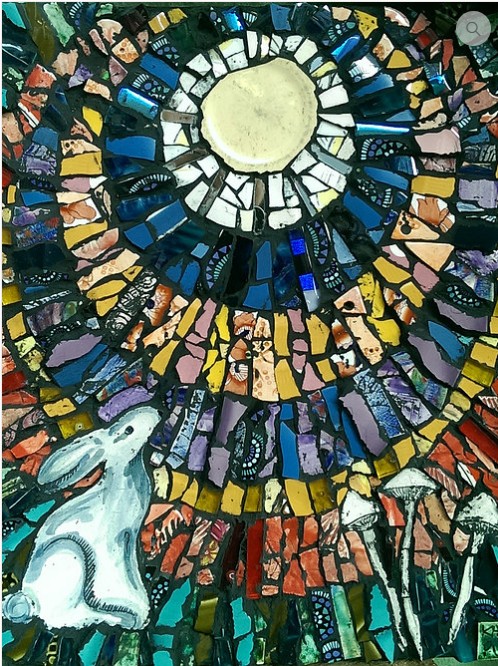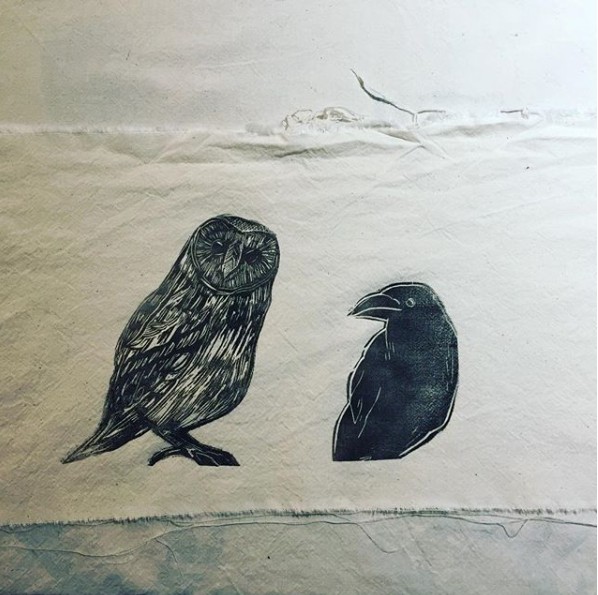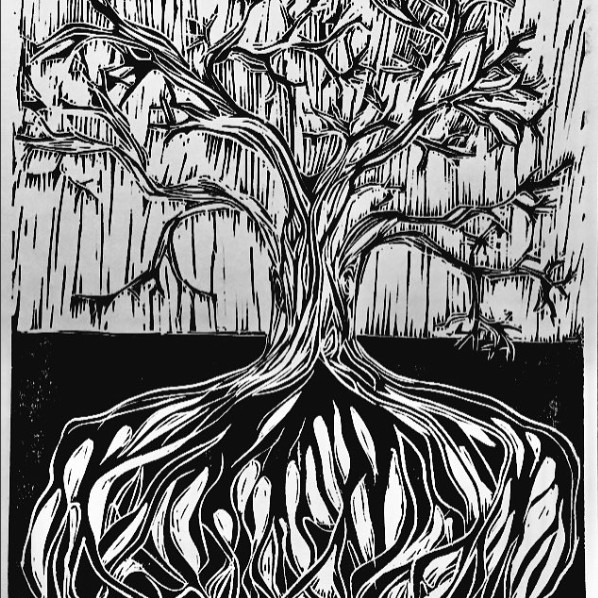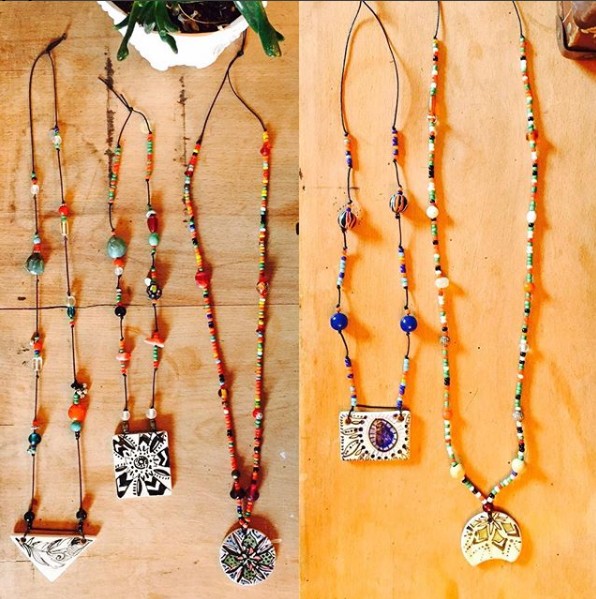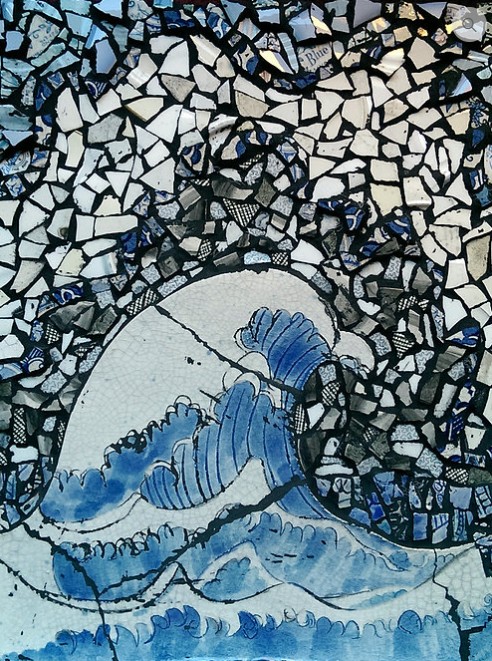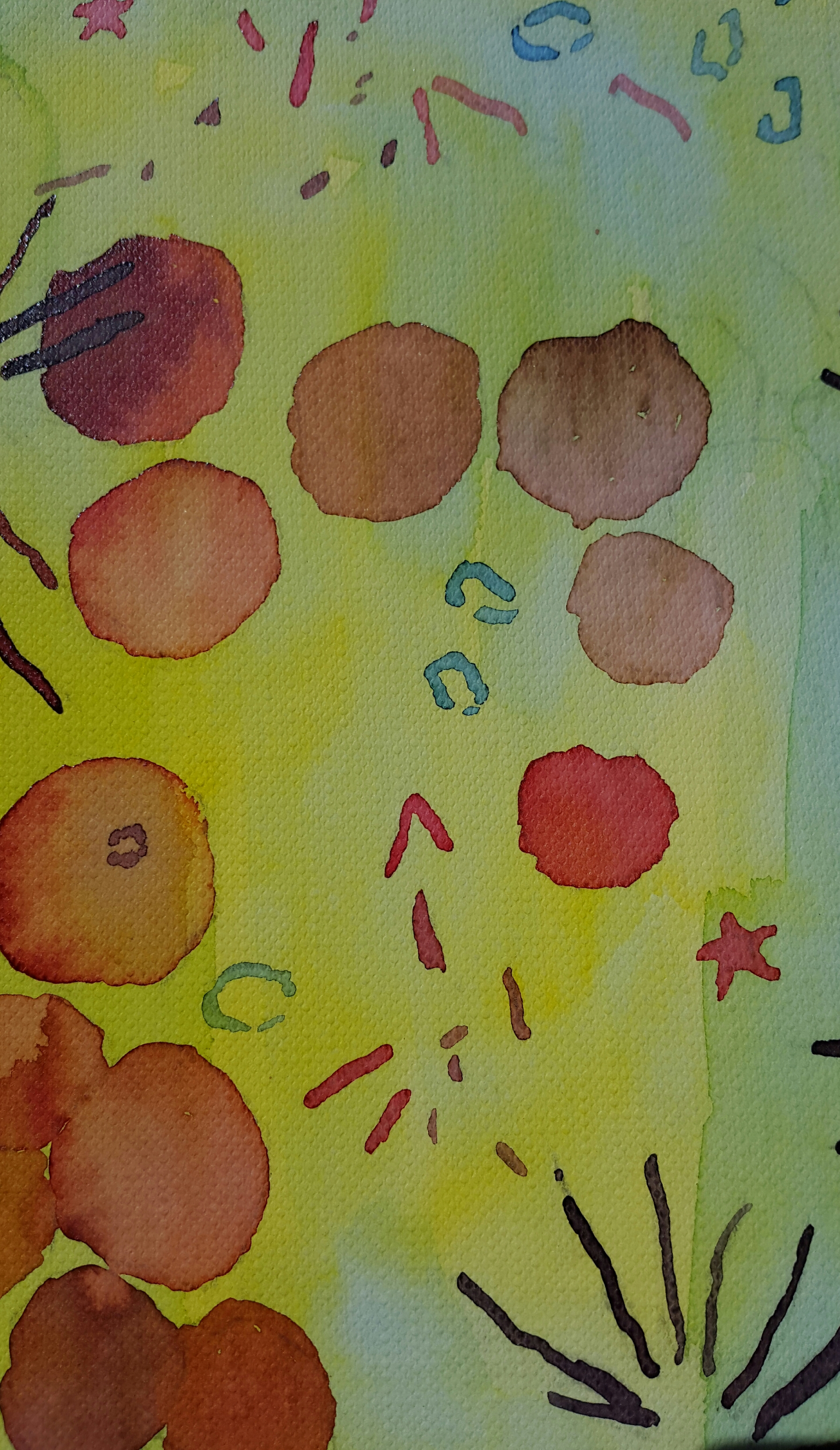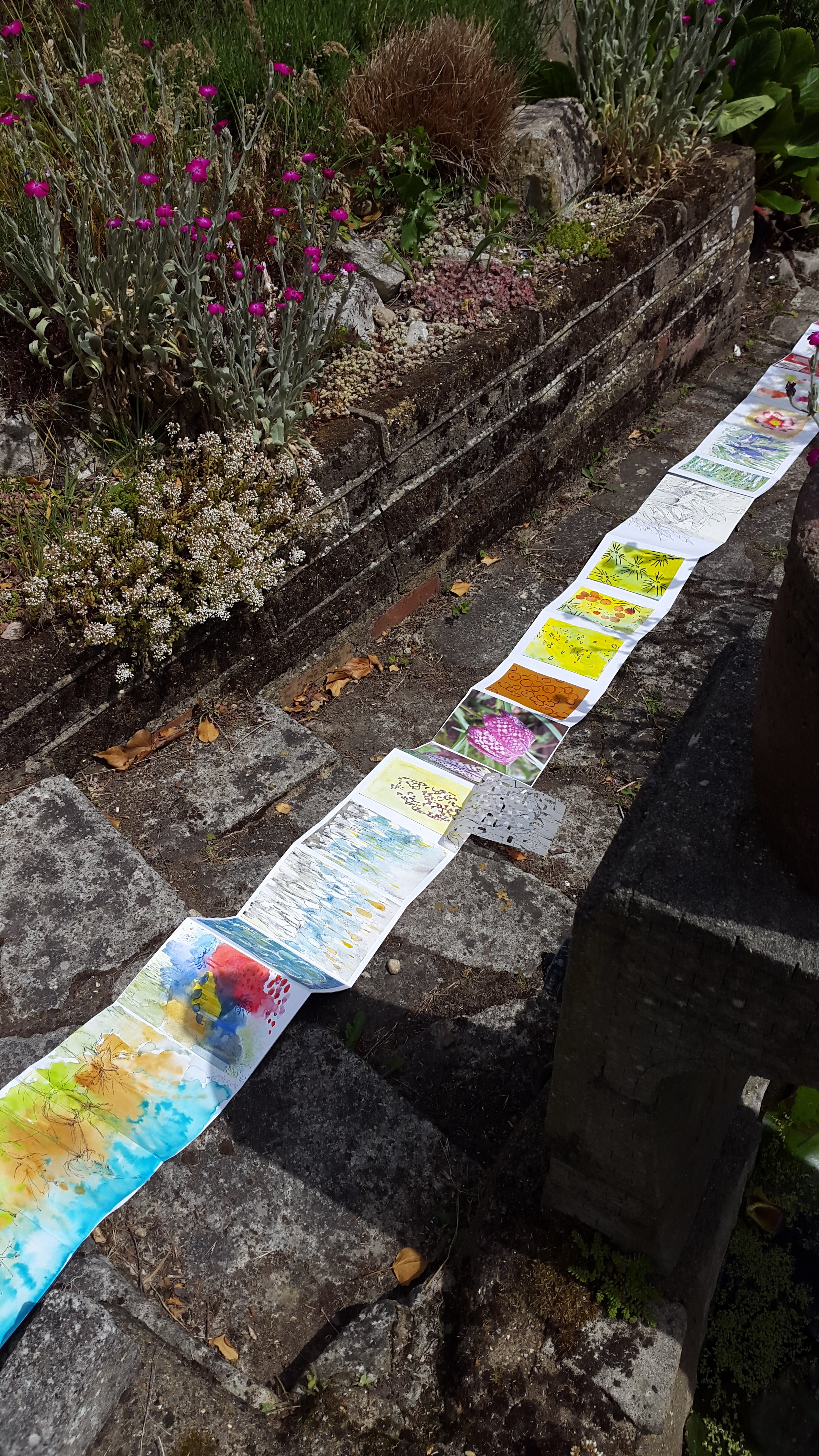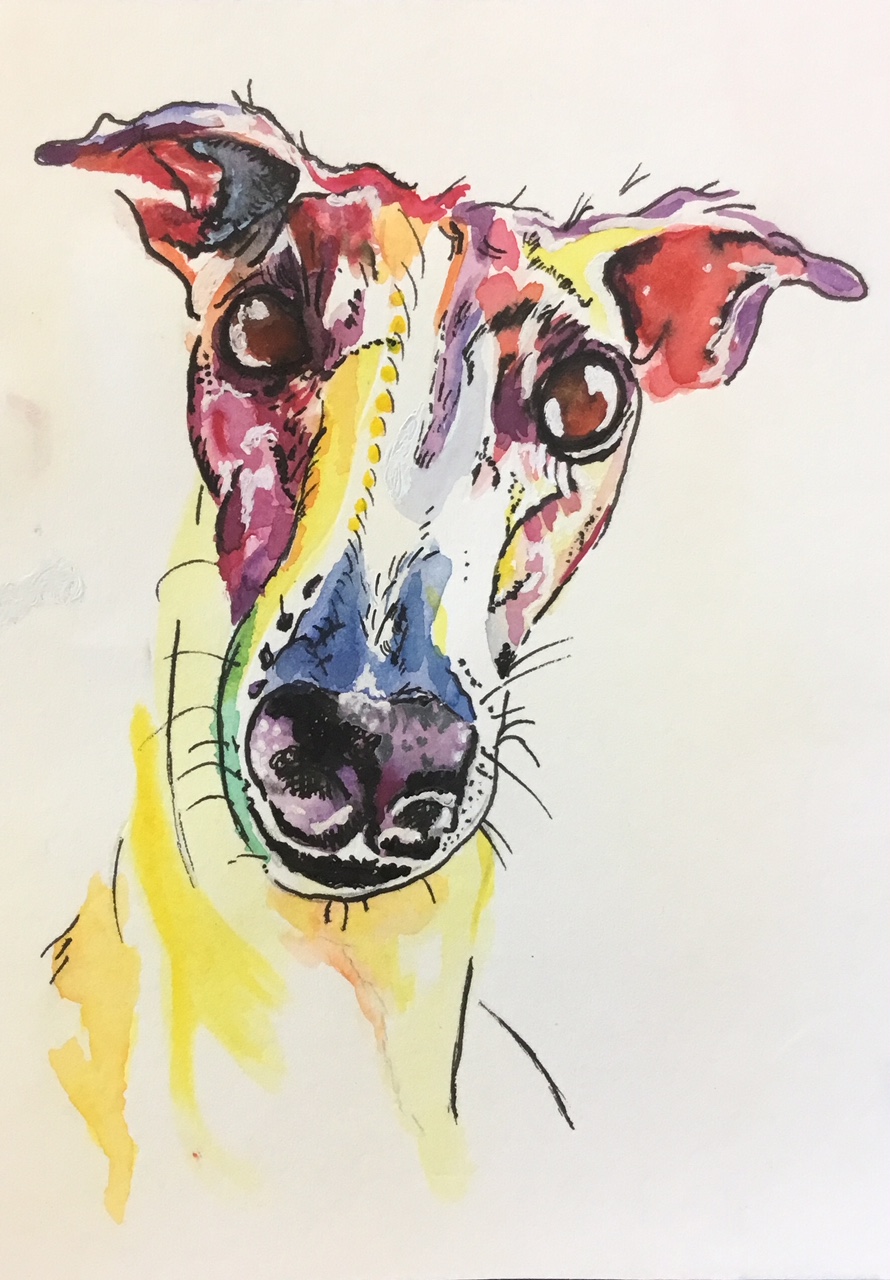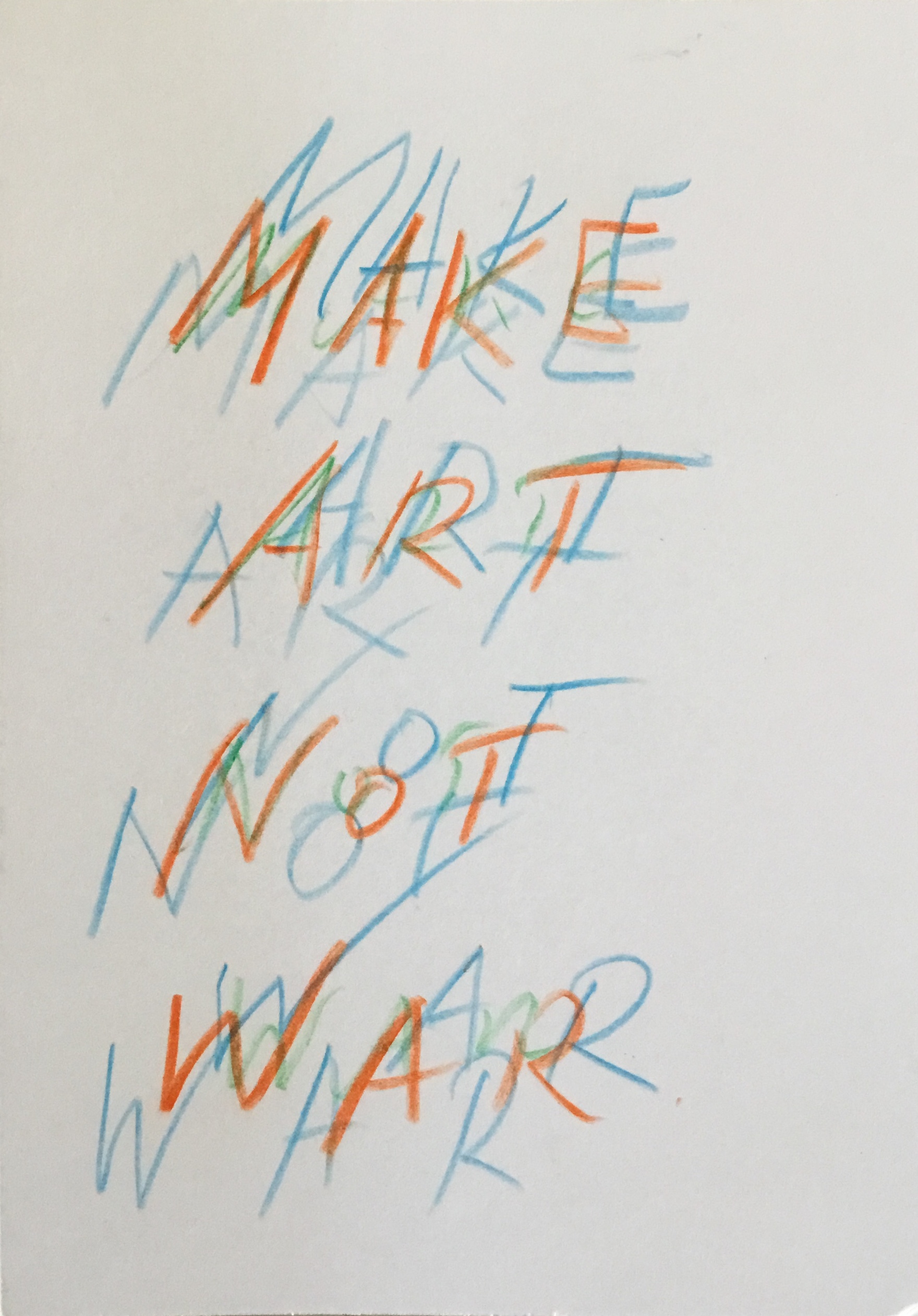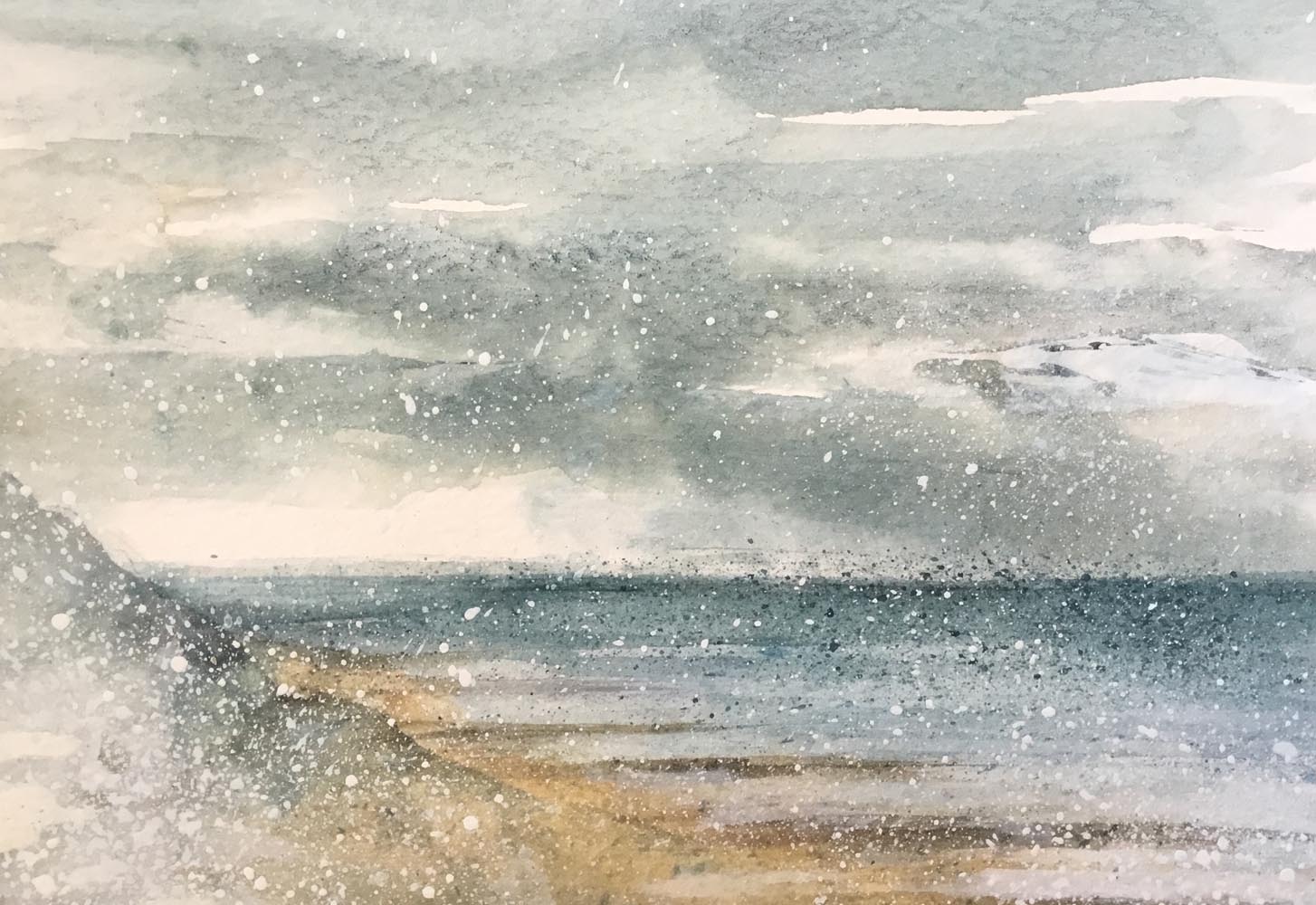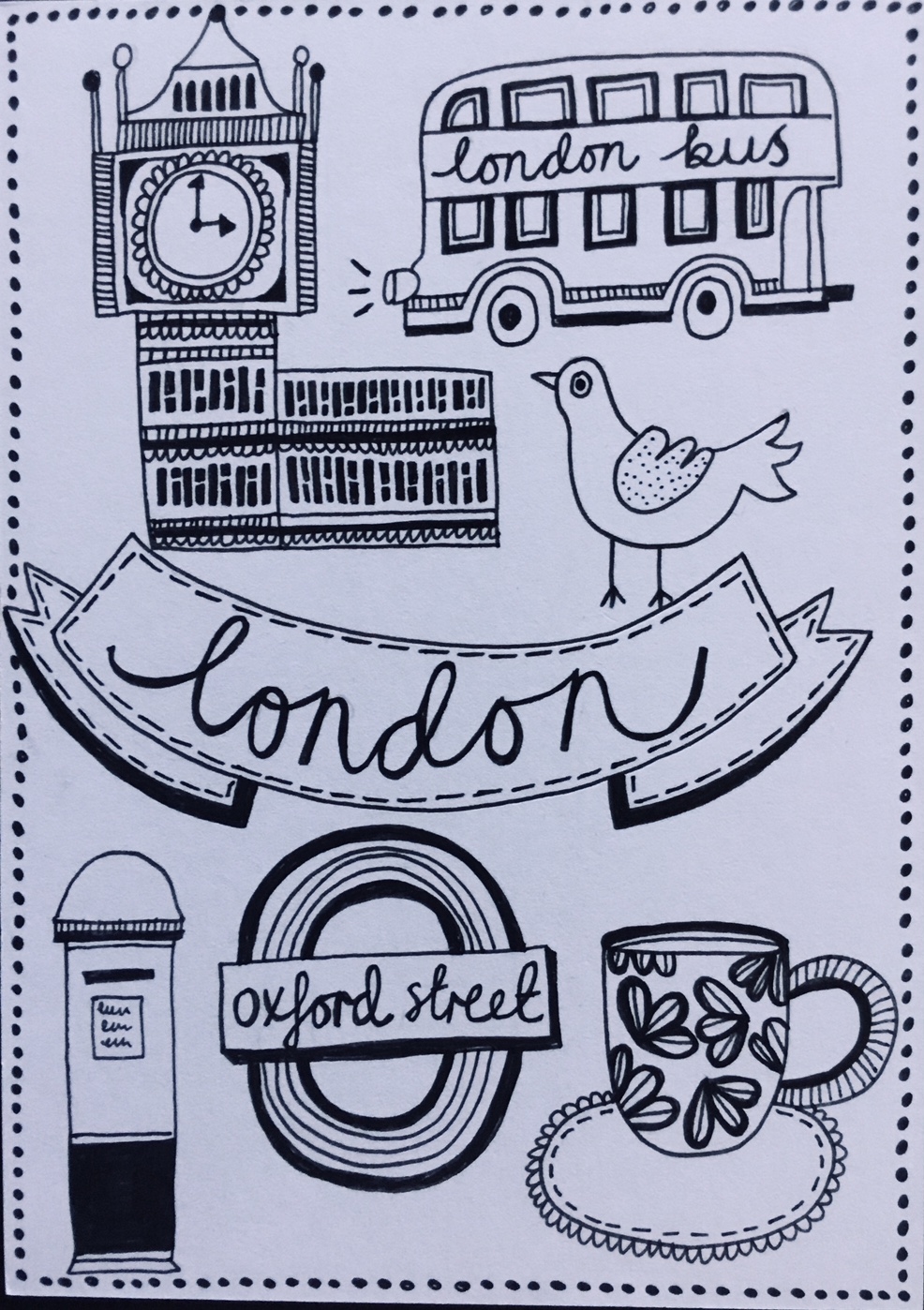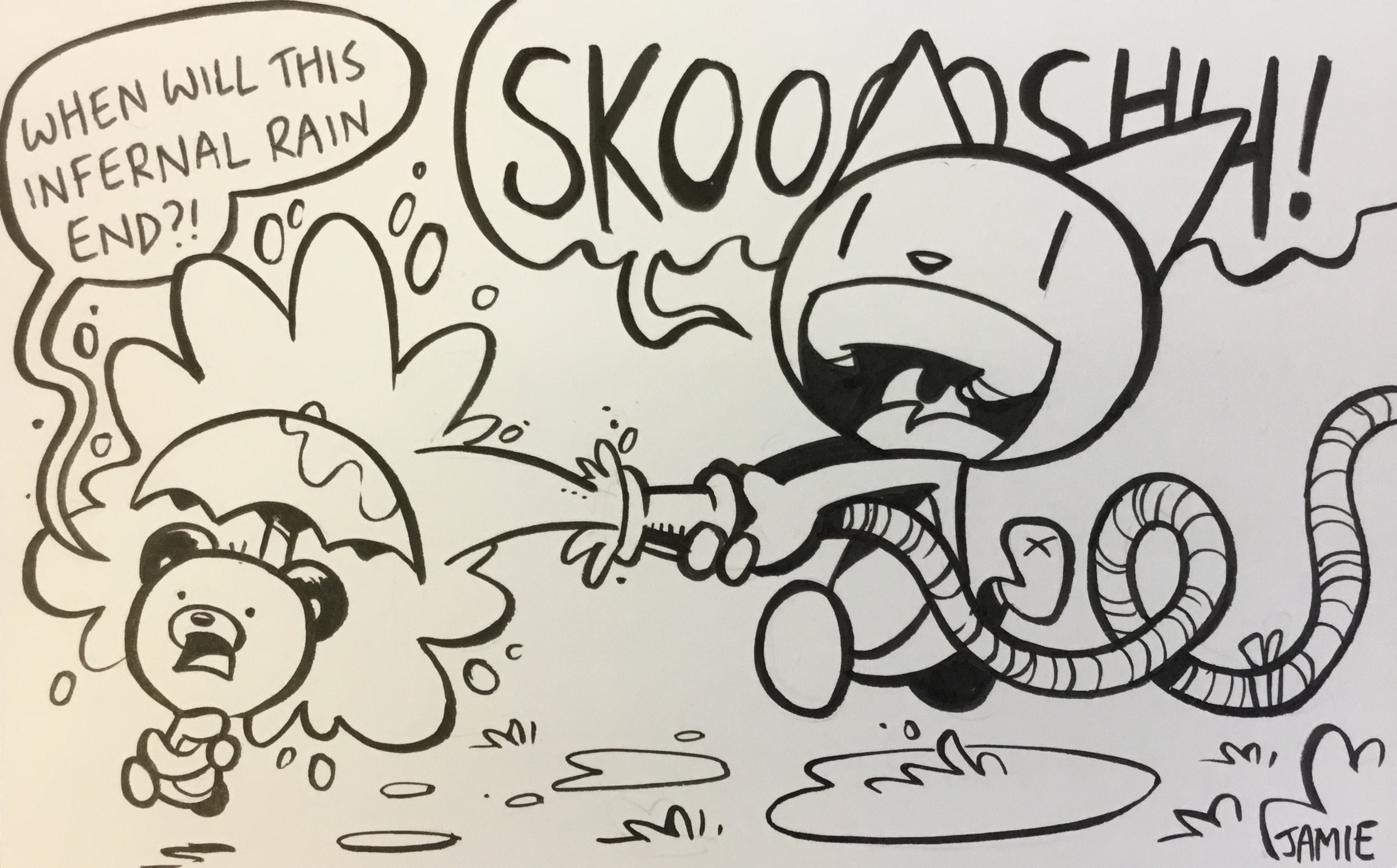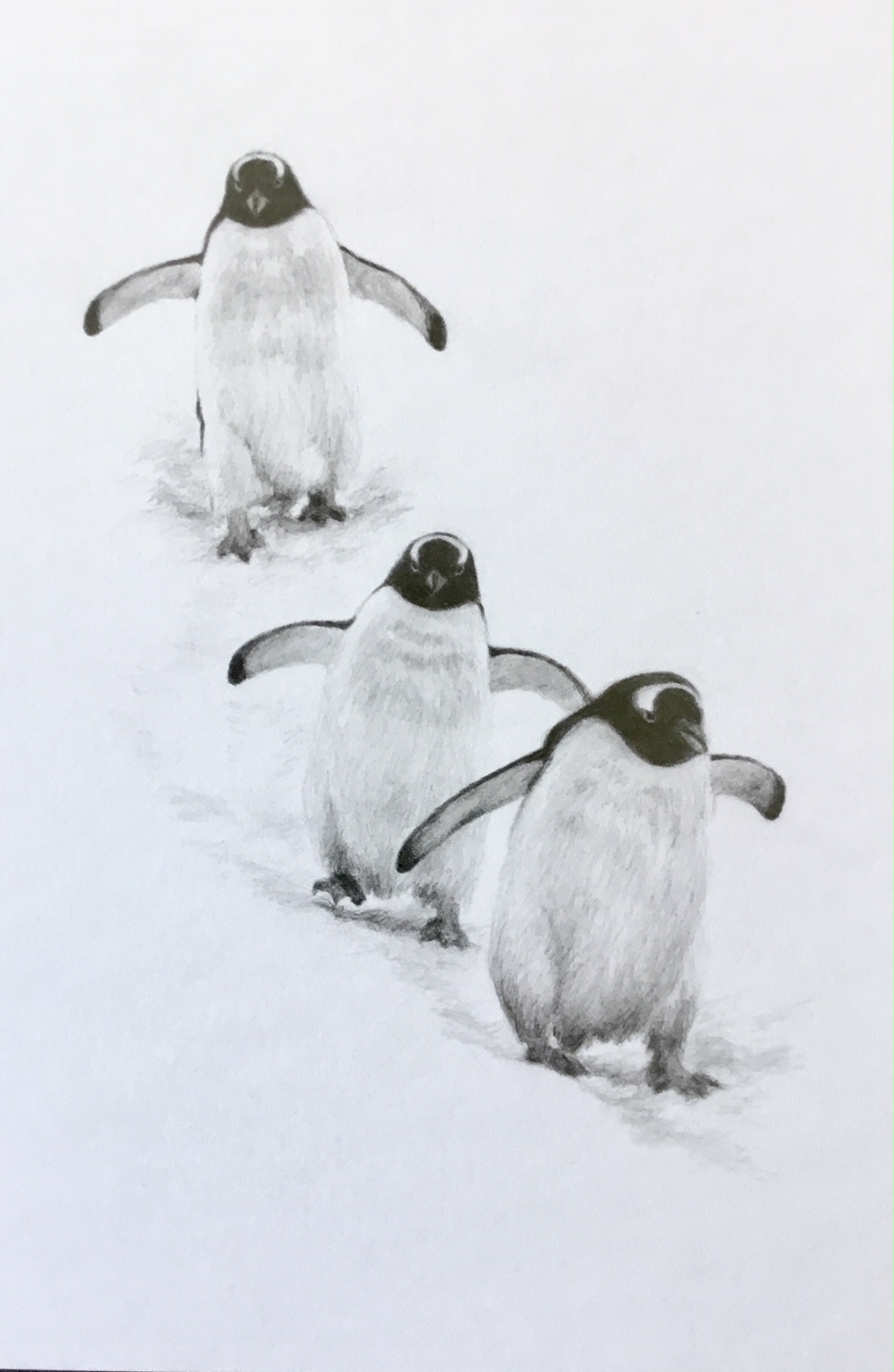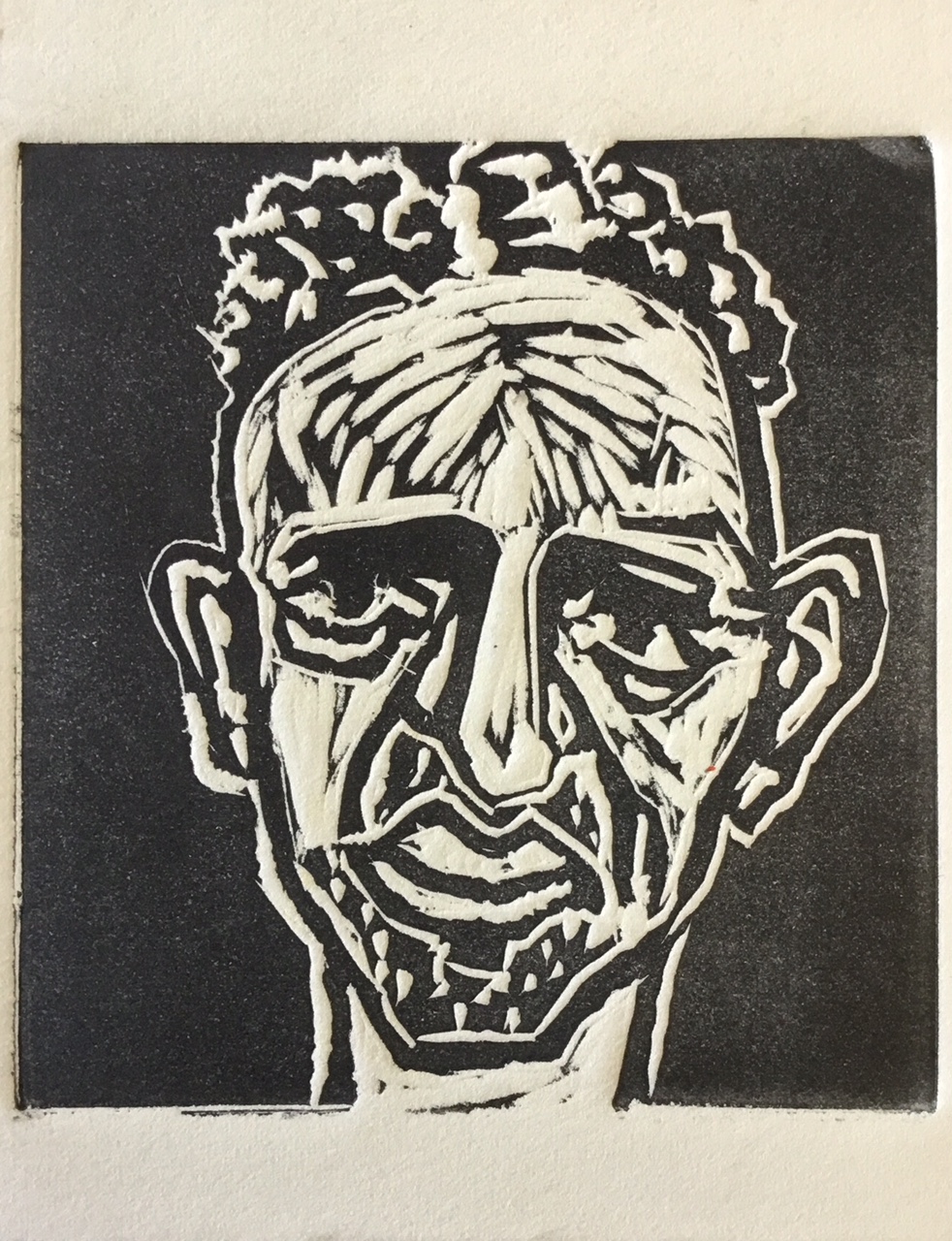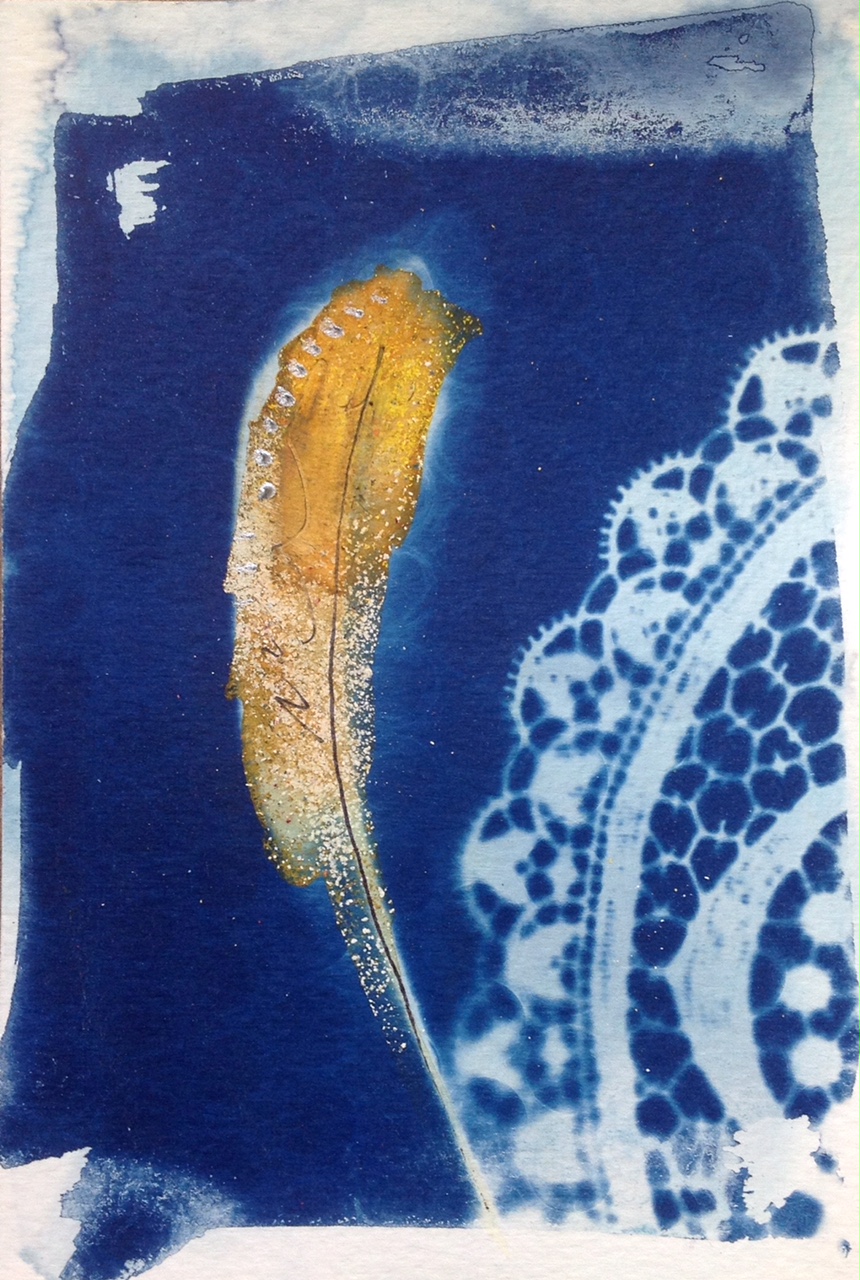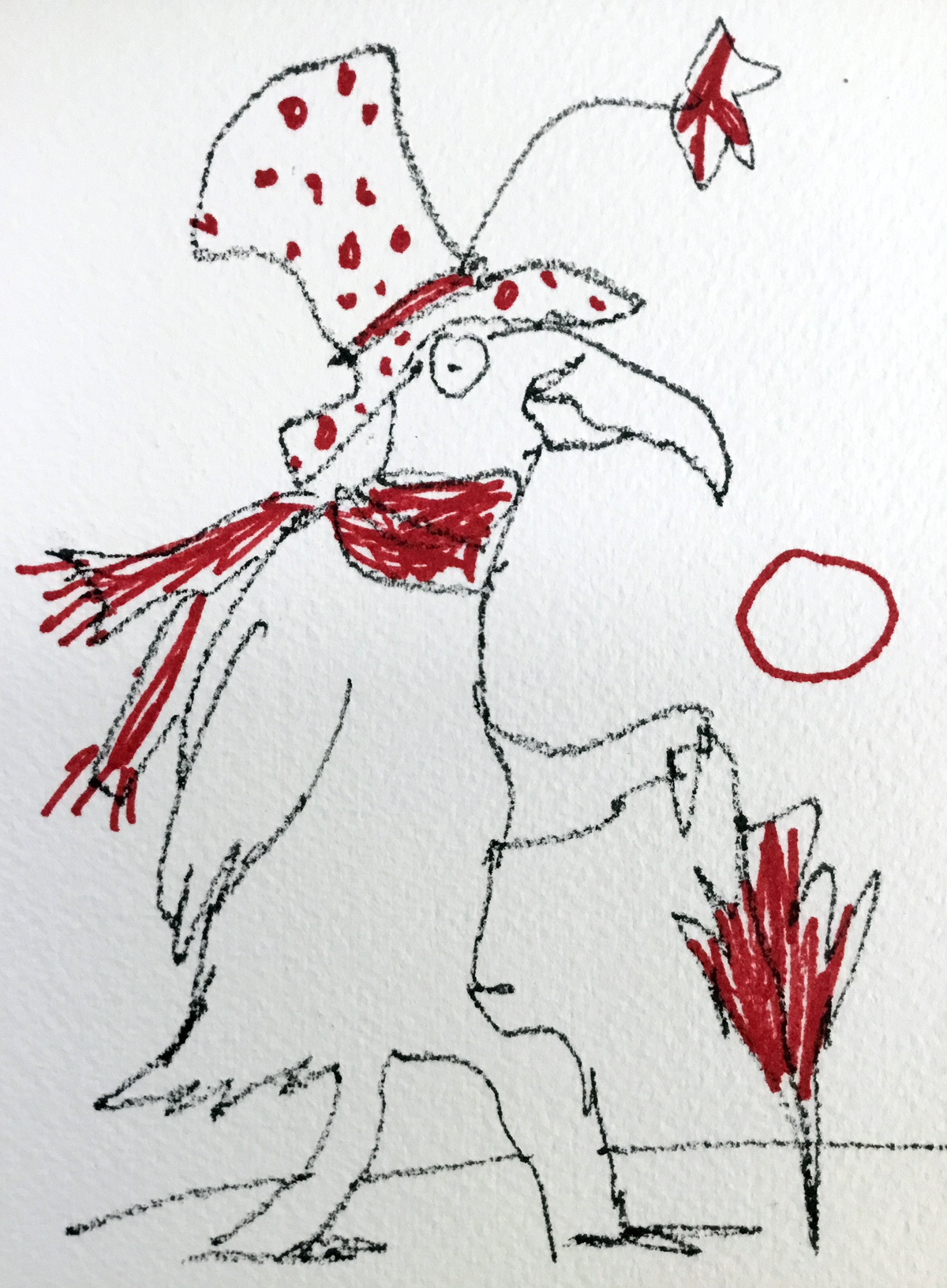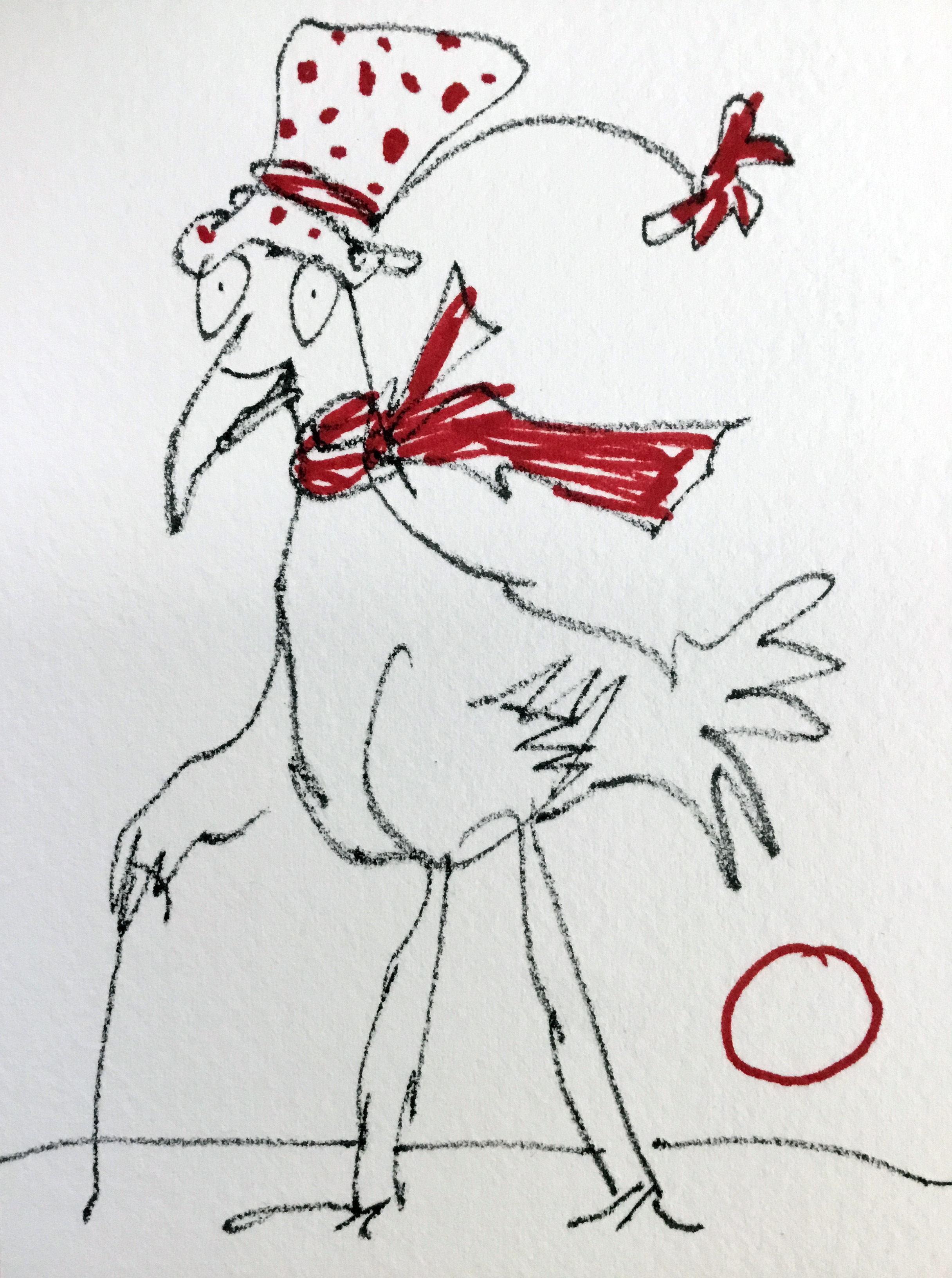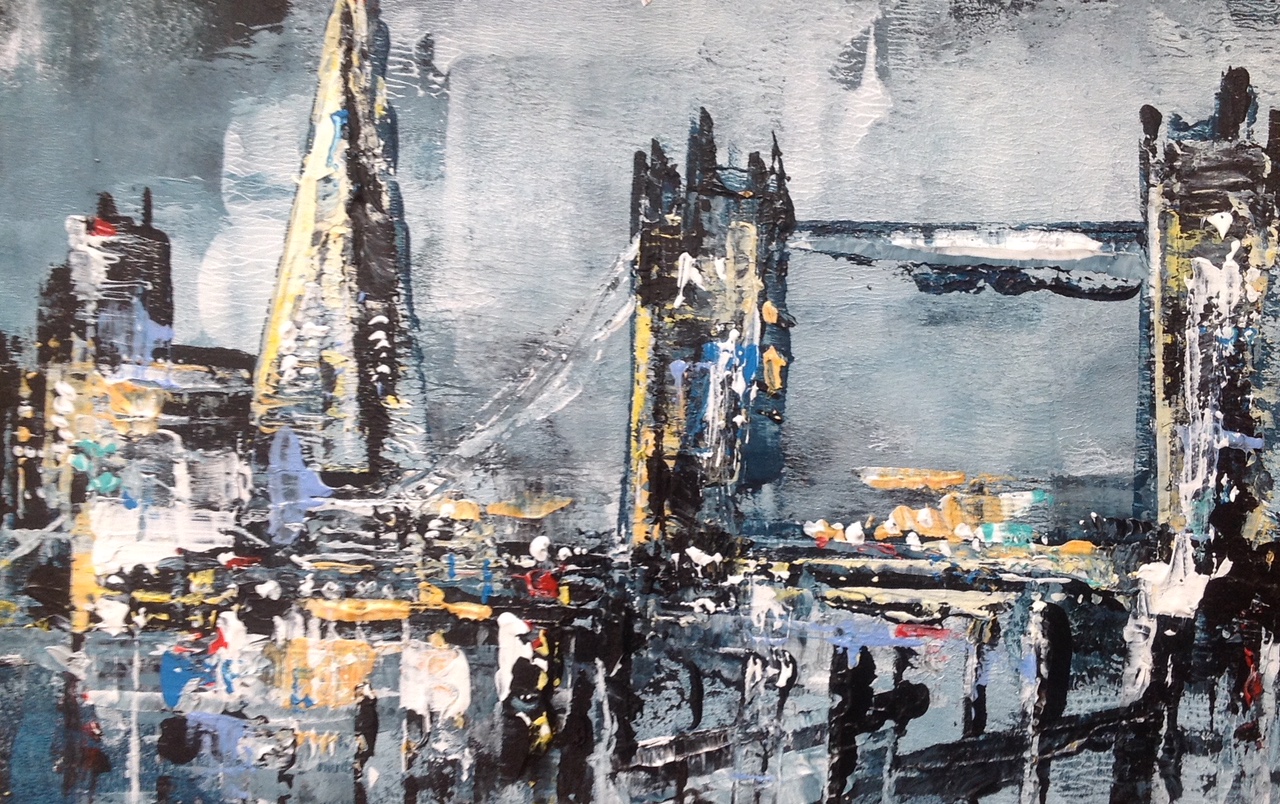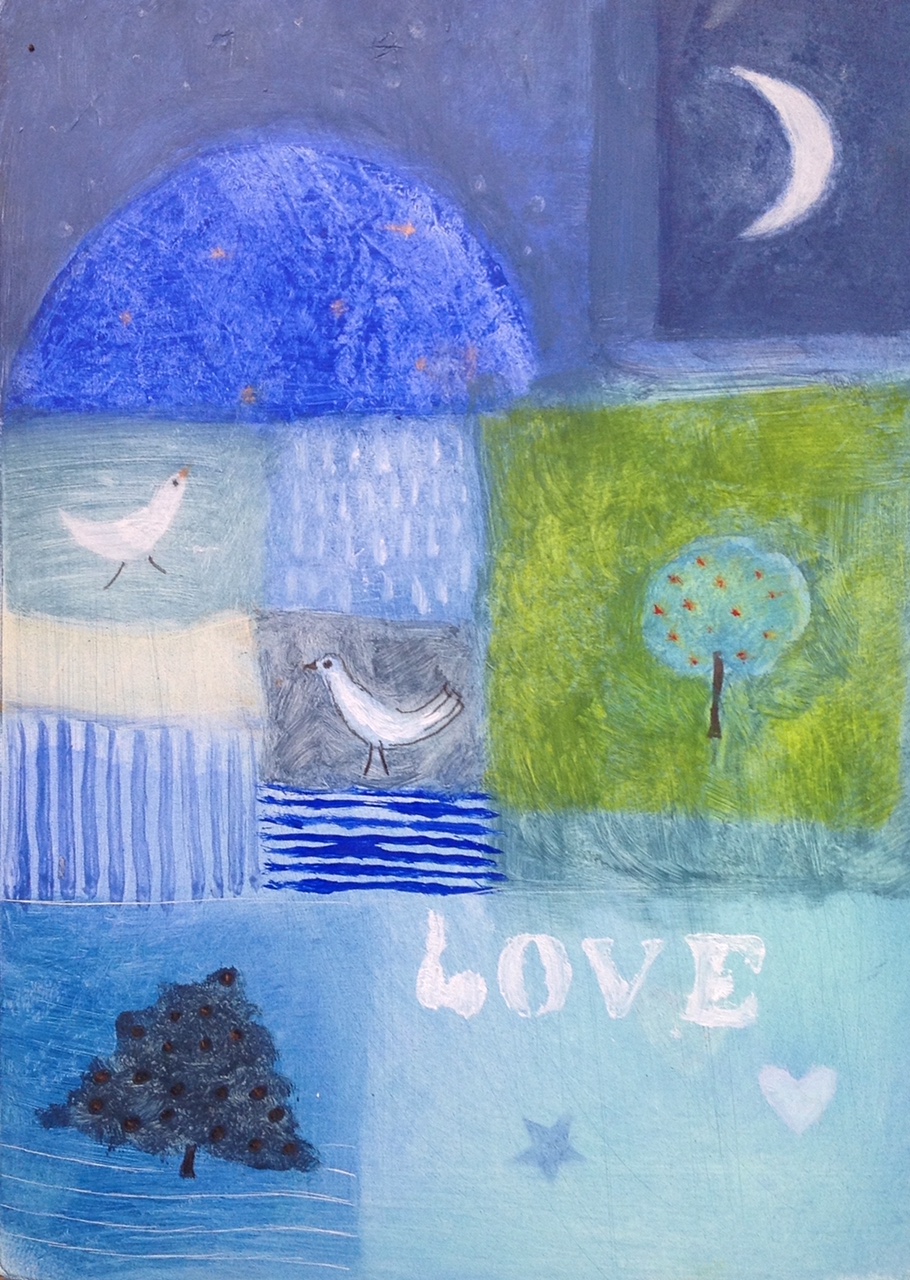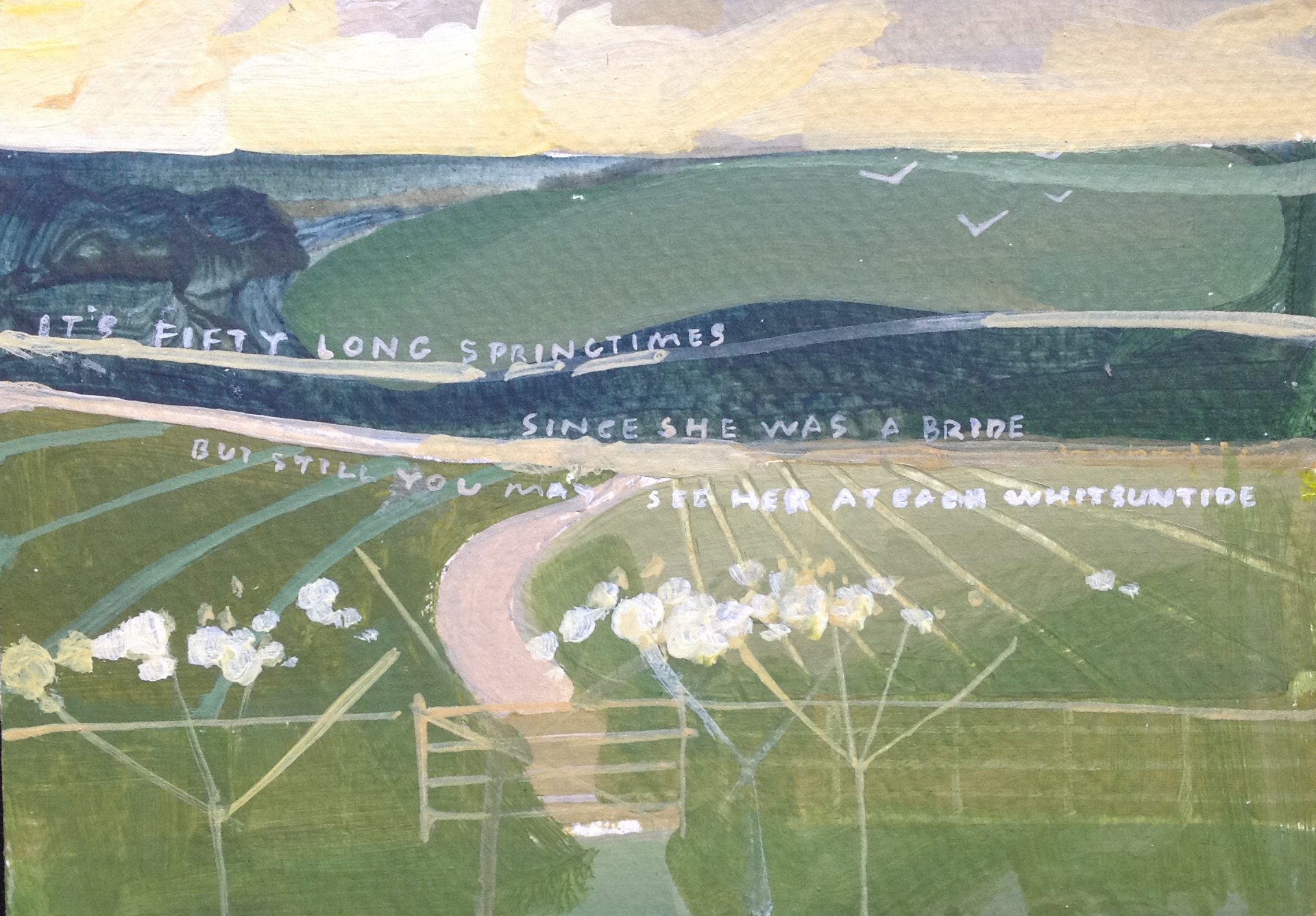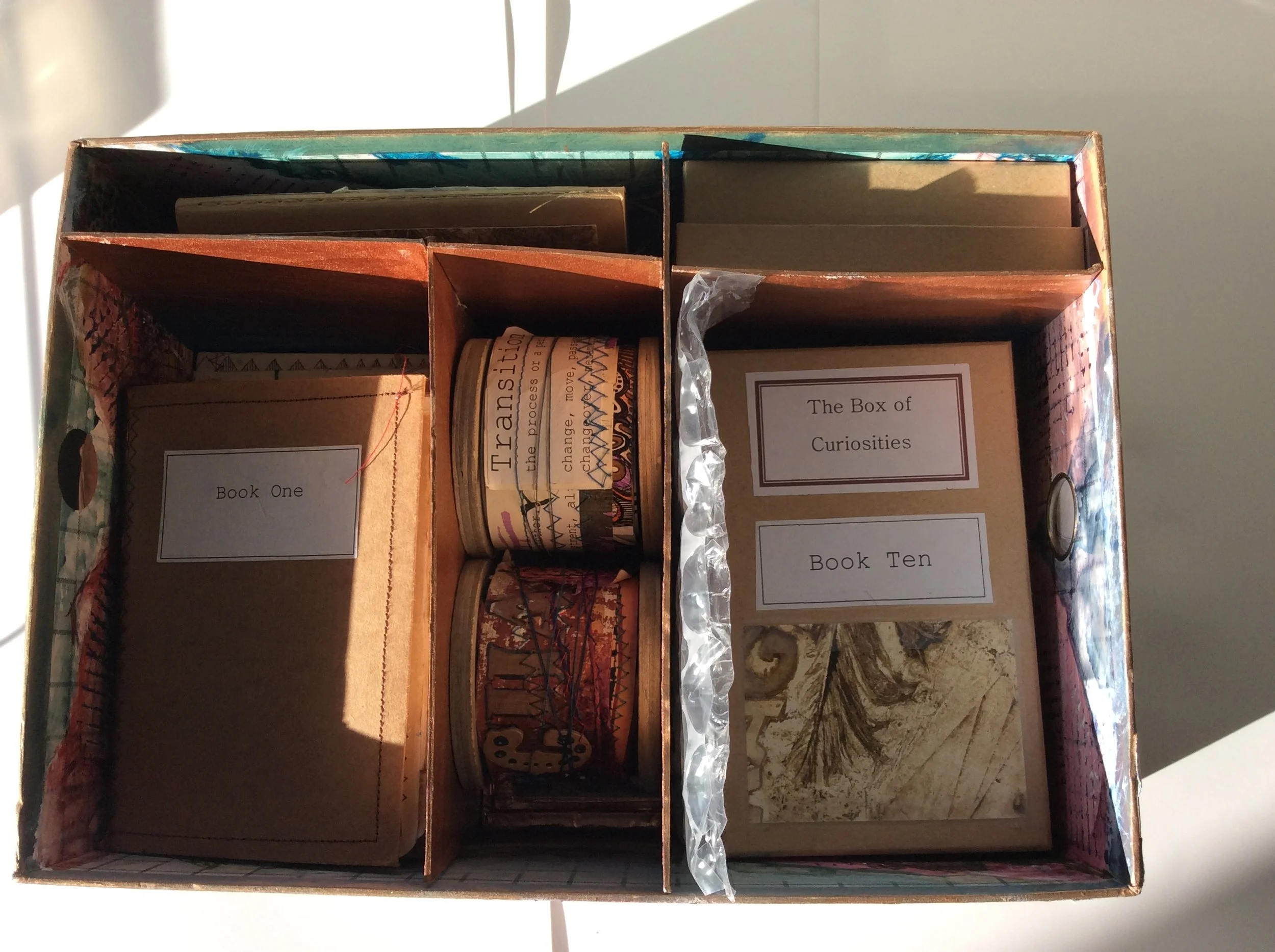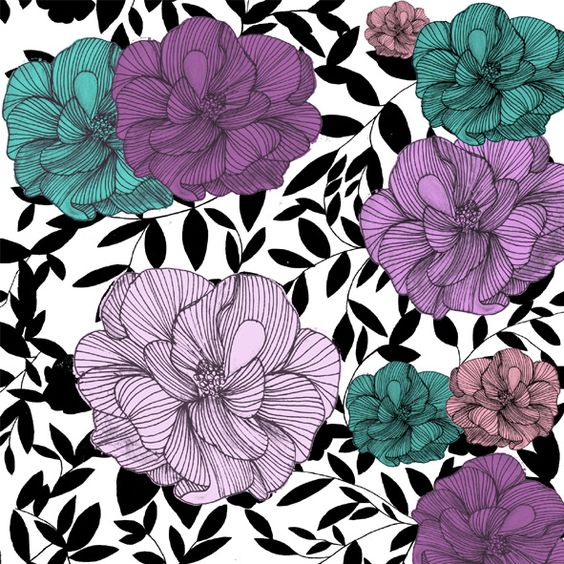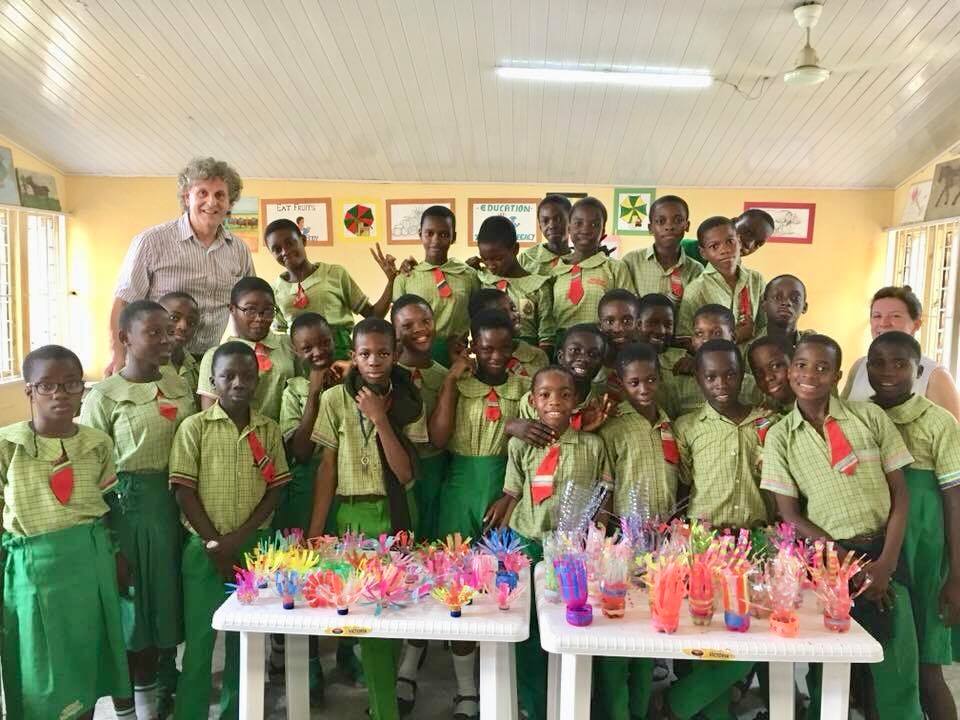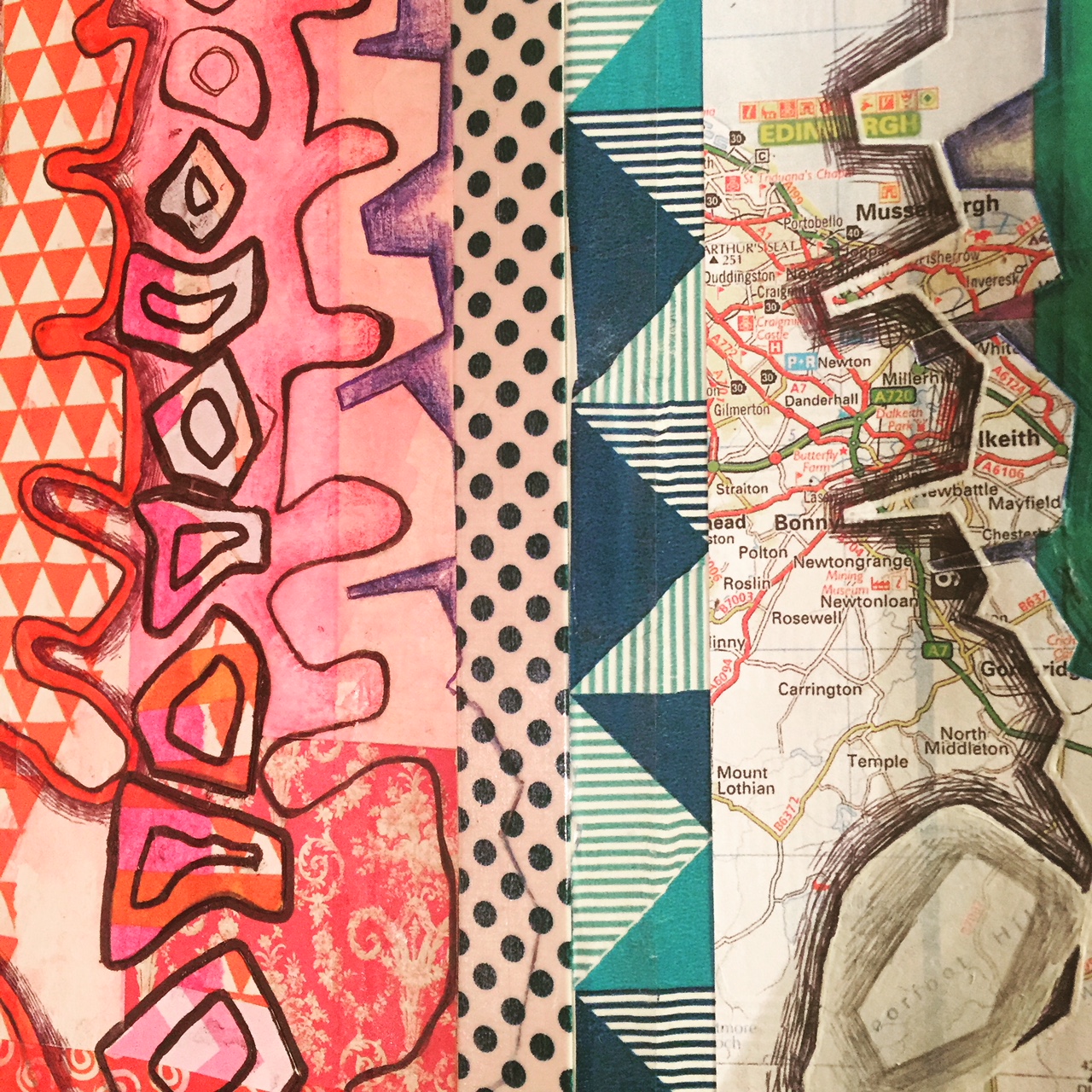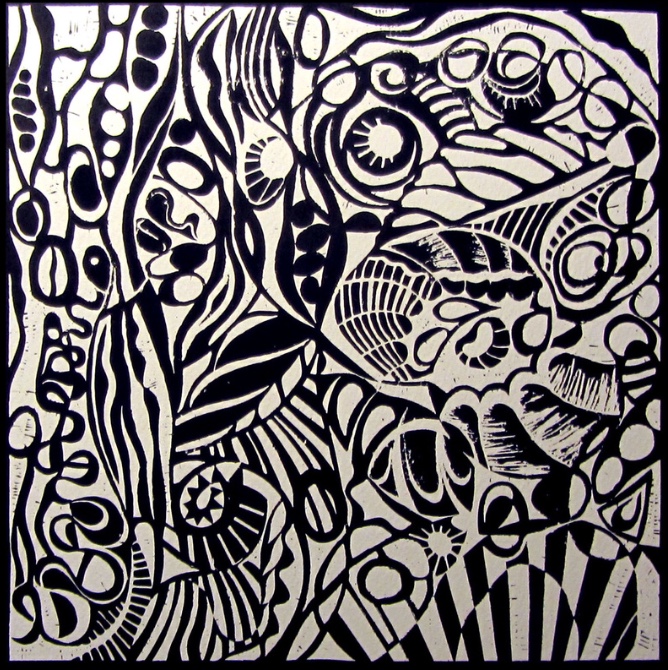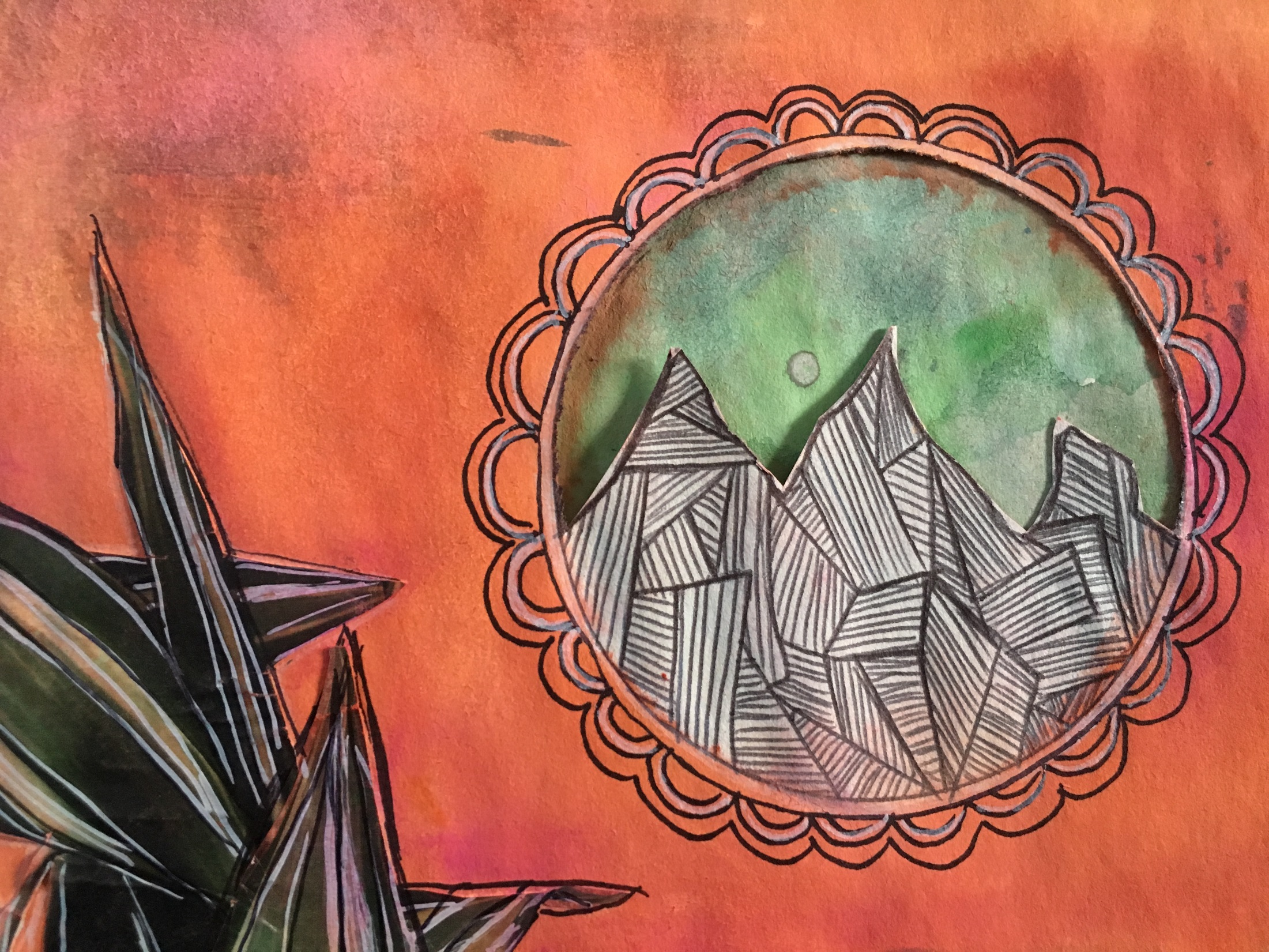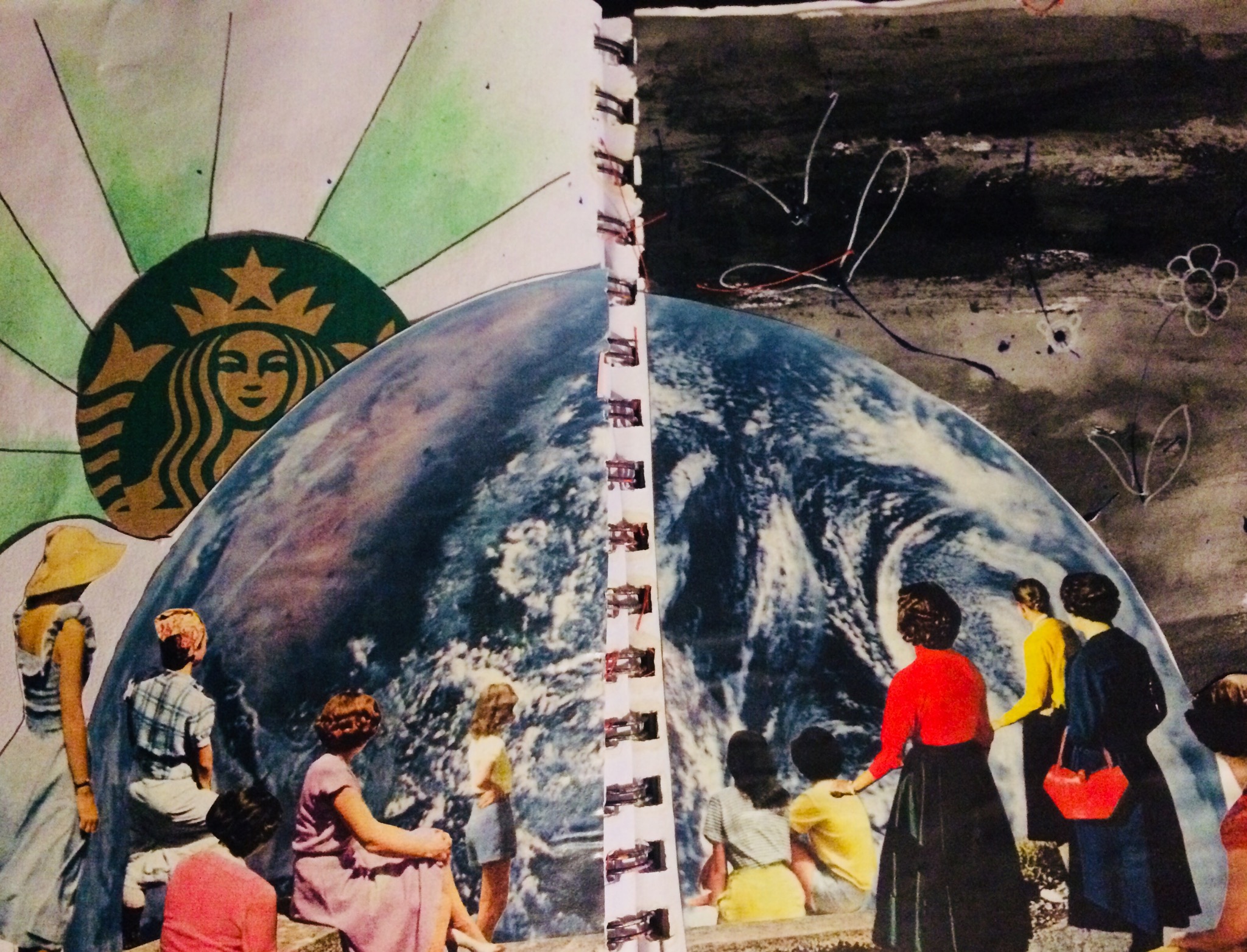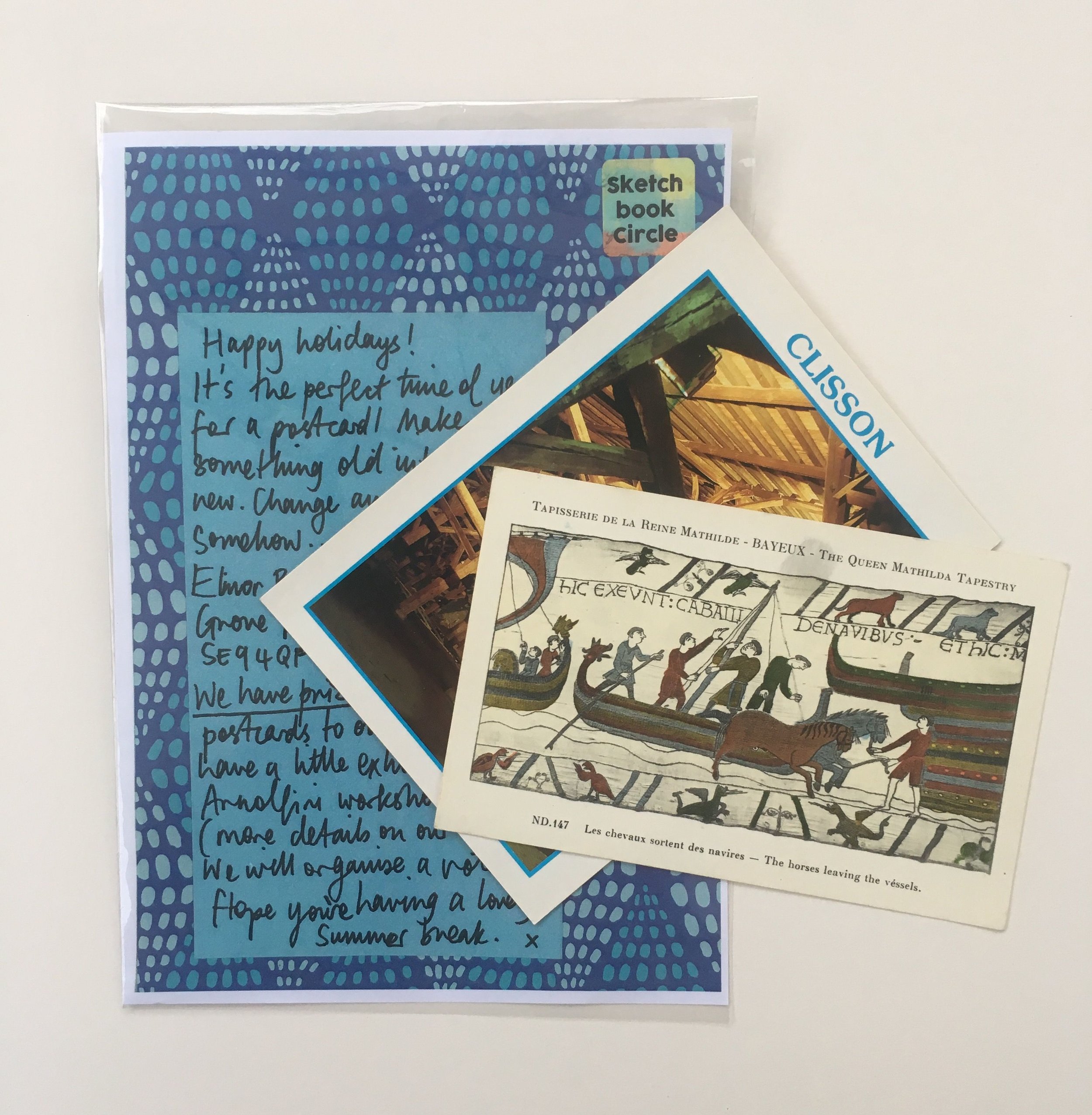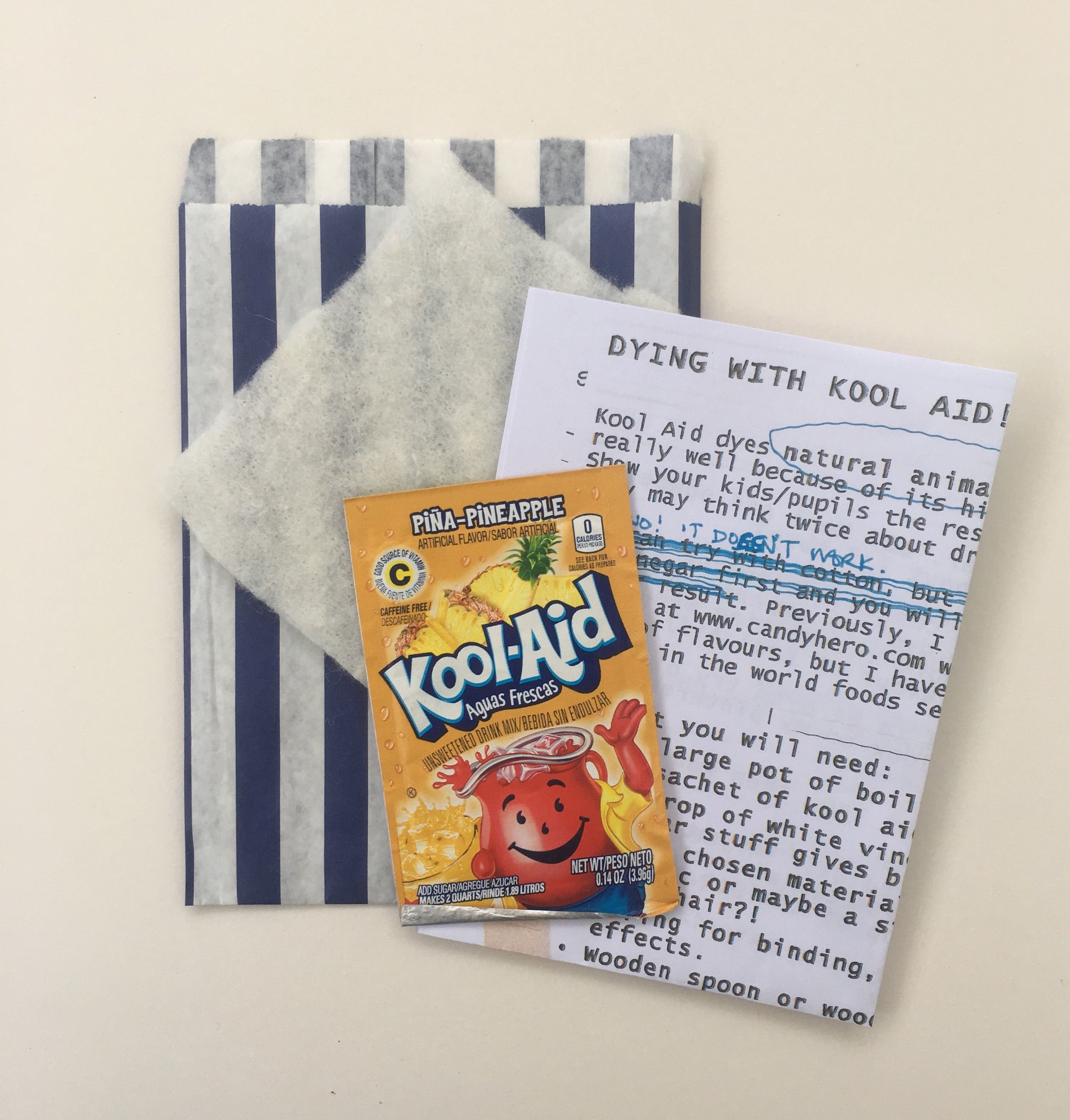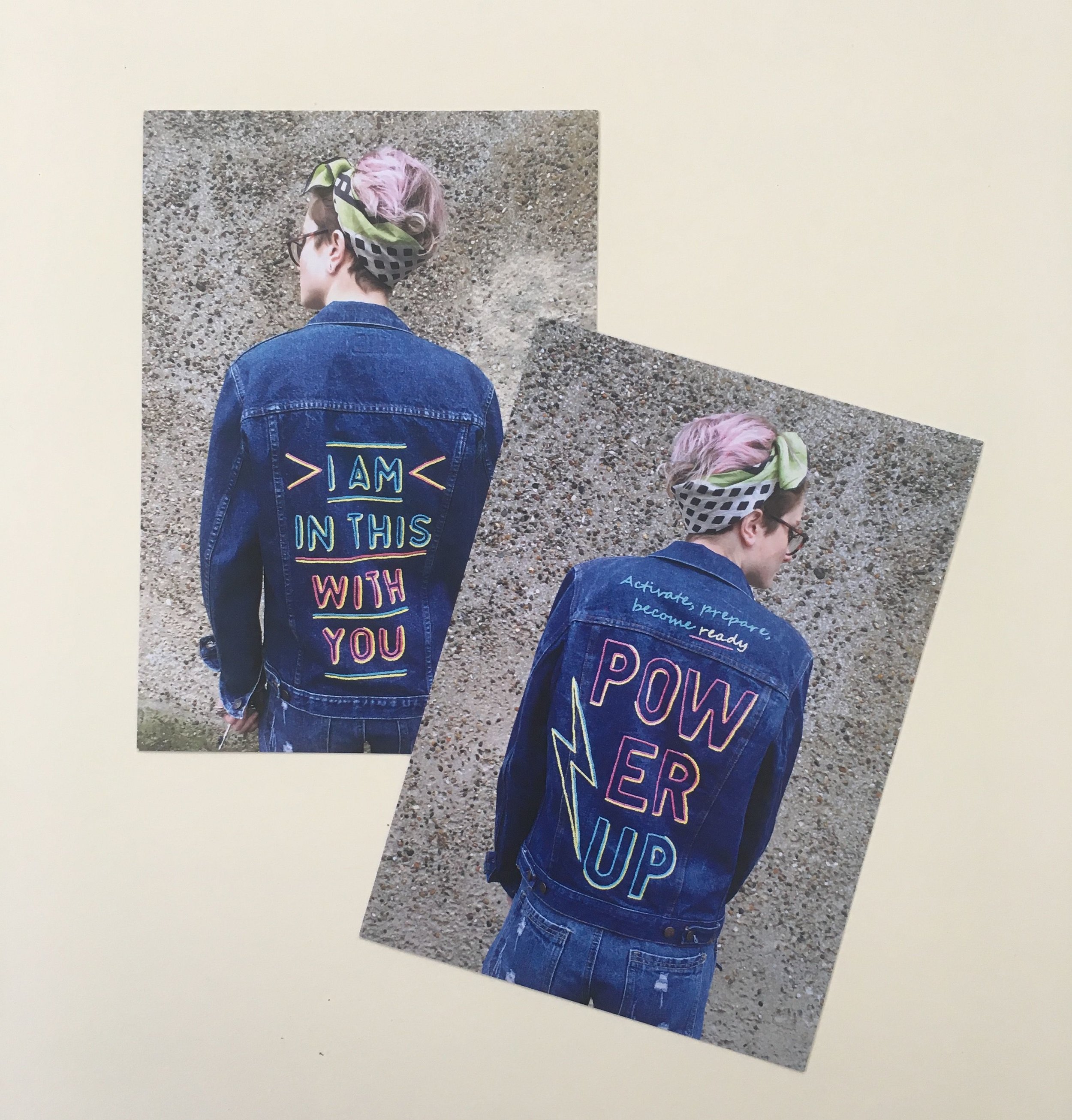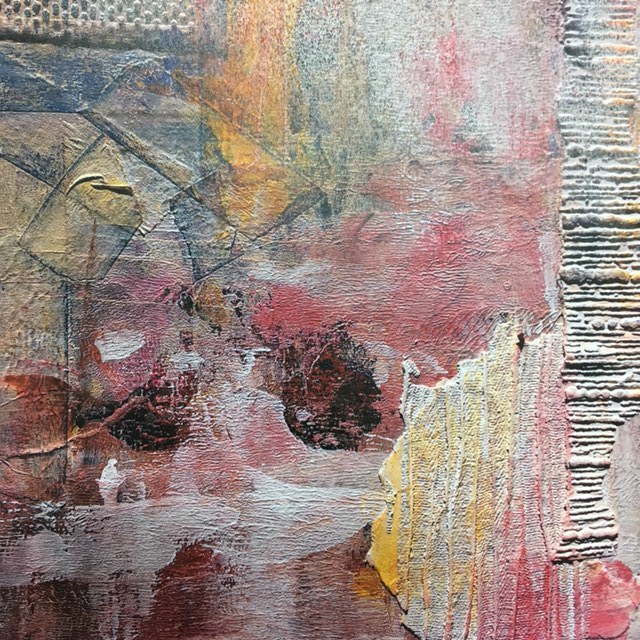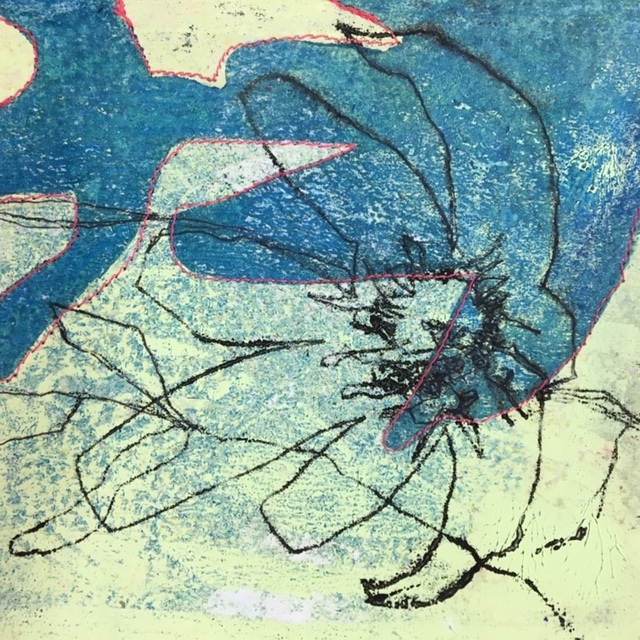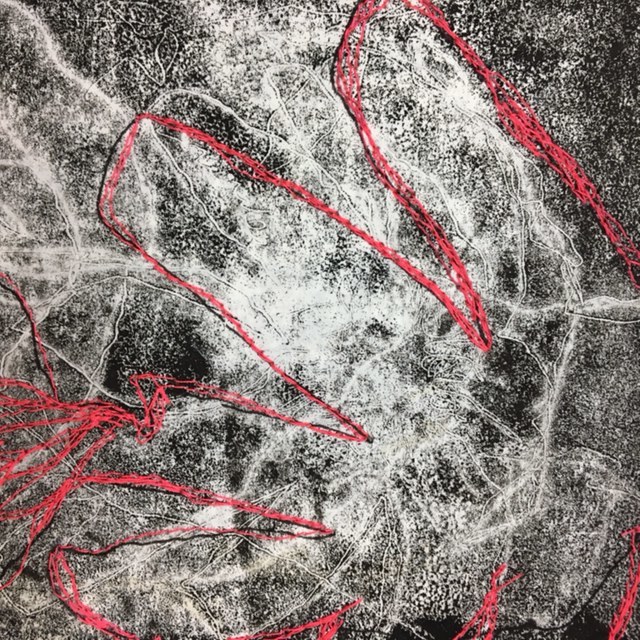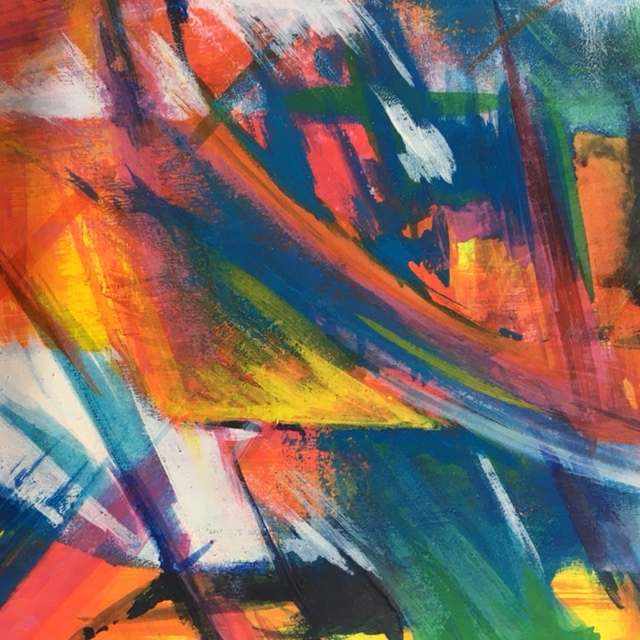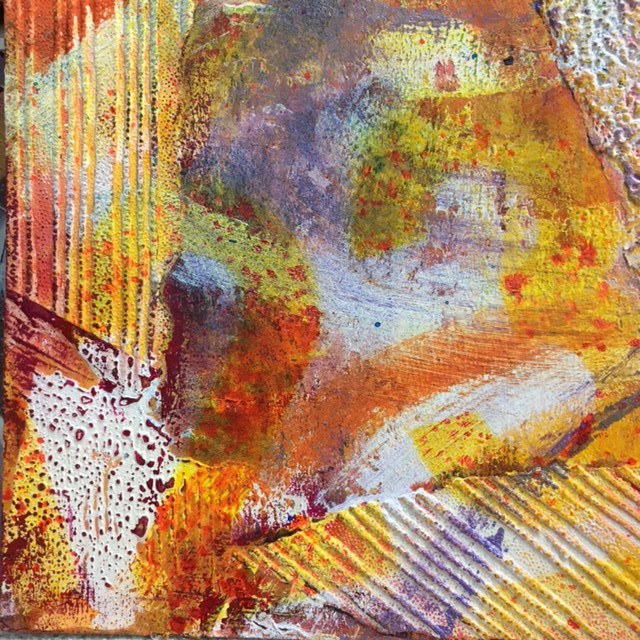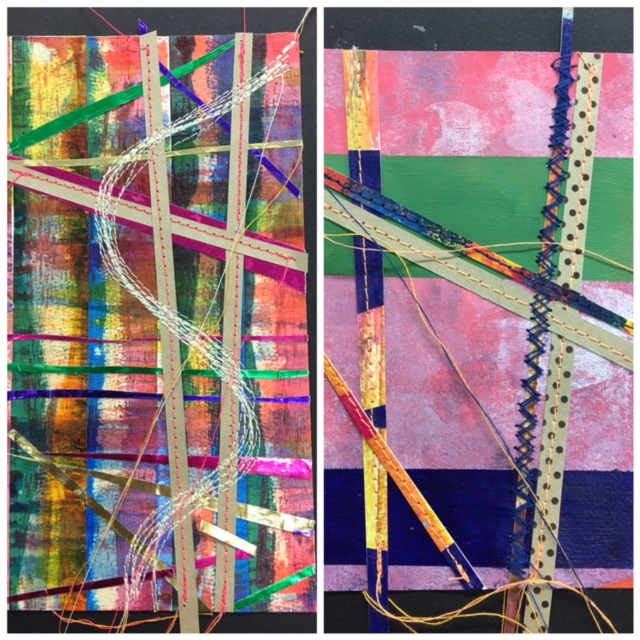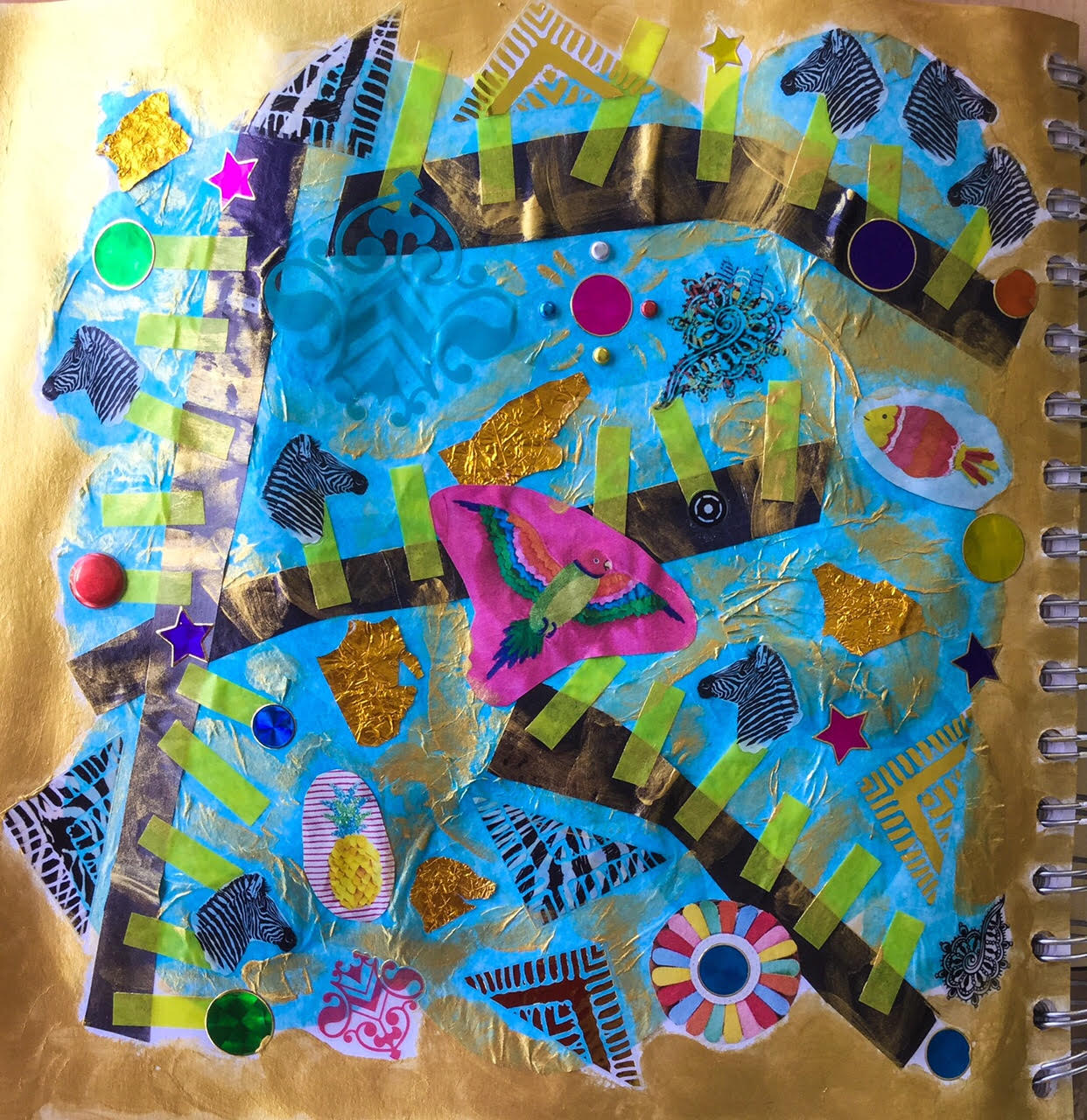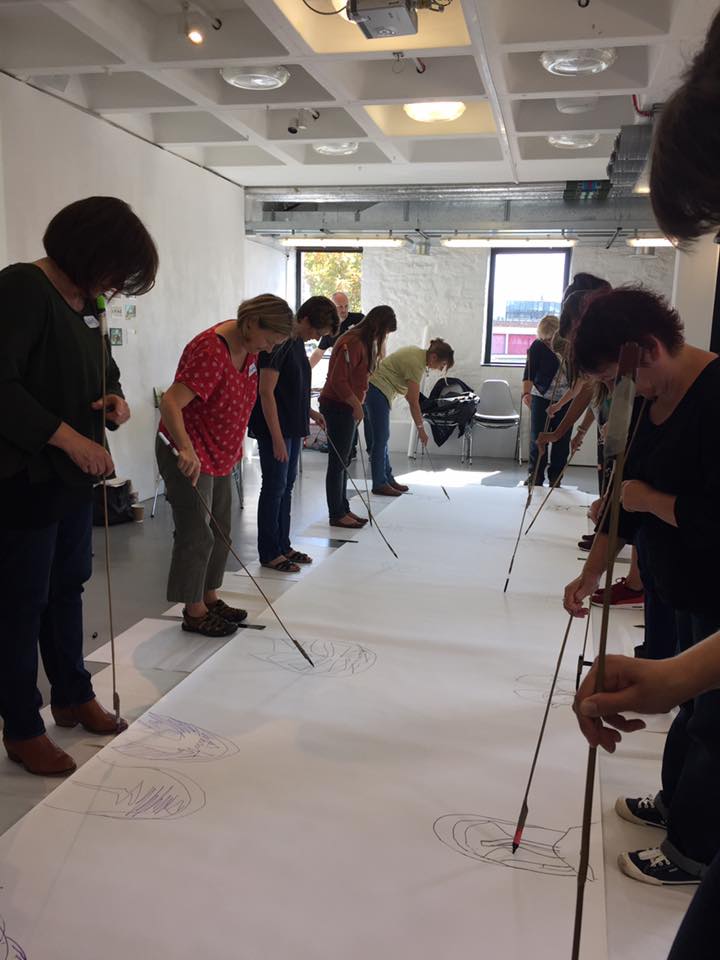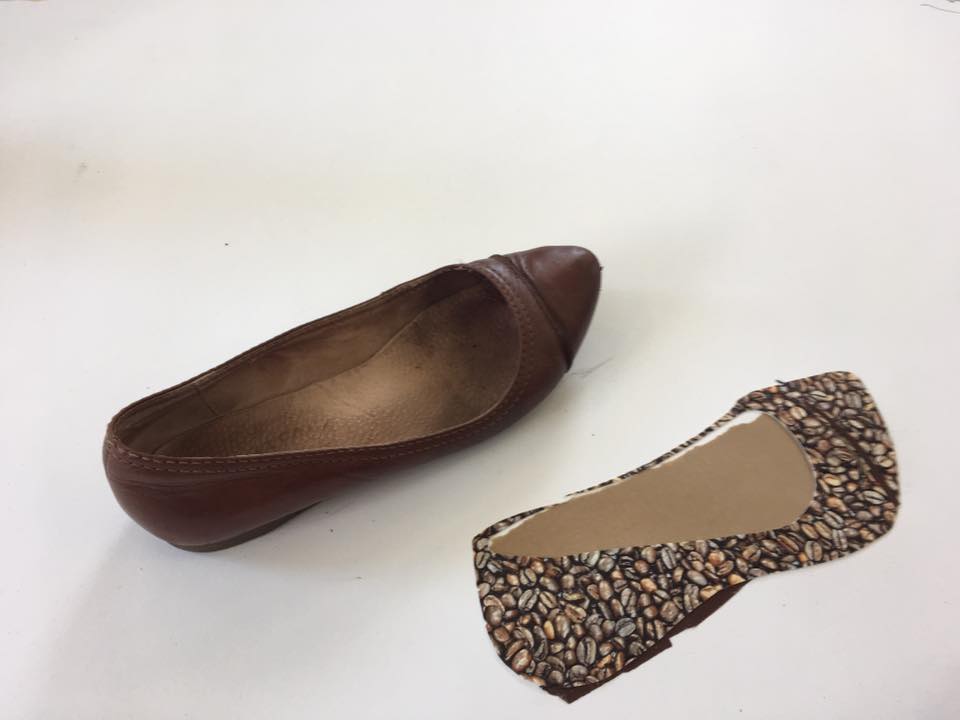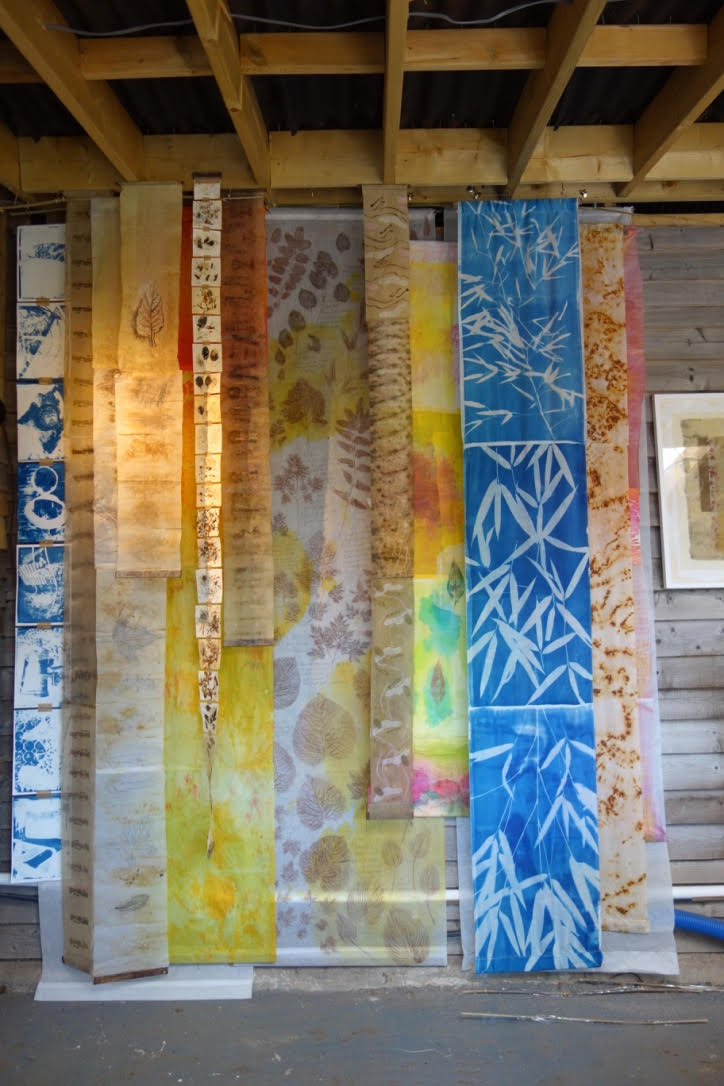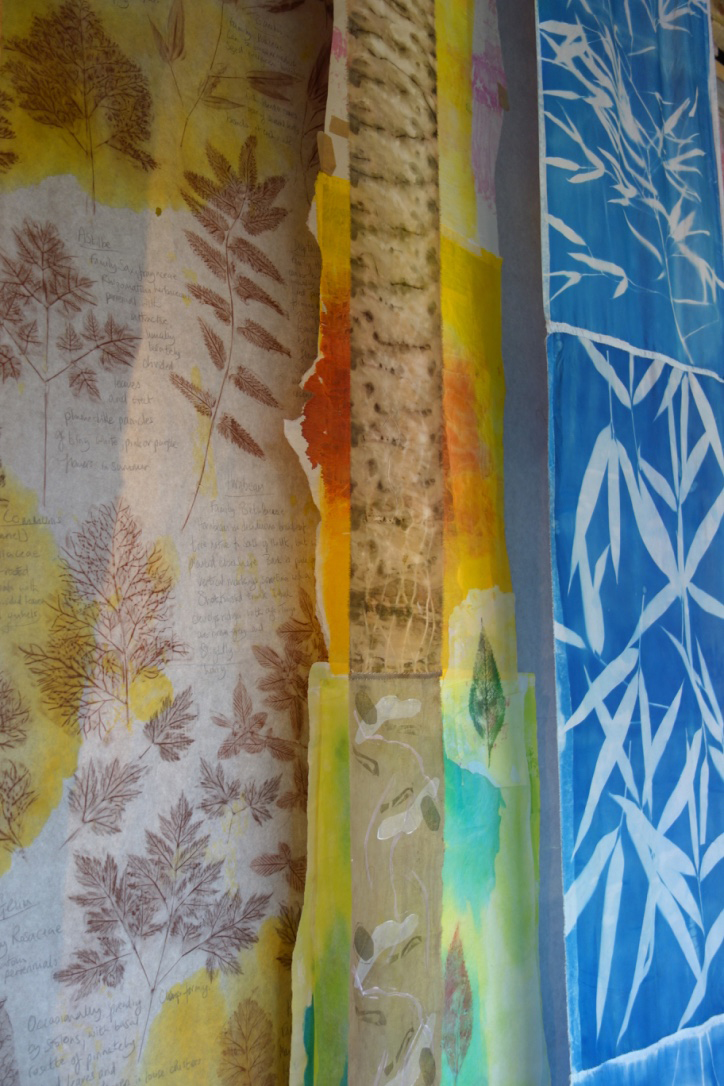Katy Pugh is an artist, workshop facilitator and manager of a Gather of Cheshire in Congleton; a shop, creative space and cafe.
I am an independent artist working mainly in mosaics. For the mosaics I search for sea glass on the beach and bits of broken ceramics, aka ‘boady’, buried in river banks and gardens. I also smash vintage ceramics from charity shops and sale rooms. I combine this found treasure with my own clay tiles and feature pieces that I paint and fire by hand. Sometimes I press seeds, leaves and shells into clay to create textured tiles. I sell original pieces online, at markets and open studios. Sometimes I make prints or cards for sale.
Recently I’ve been exploring lino printing and doing more drawing and sketching. I’m working in black and white and focussing on birds and feathers. I run workshops in various mediums including lino print. Glass and enamel.
My work is influenced and inspired by nature. I grew up, and am now bringing my kids up, in the stunning Cheshire countryside - pludging for boady on the banks of the Dane and windy walks up The Cloud or The Roaches. Family holidays are spent exploring in rock pools and pebbly beaches. I am inspired by the intensity and expanse of landscapes and fascinated by the tiny details. I have endless curiosity for glimpses of tiny shards of river worn pottery, hand smoothed wooden field posts, tufts of fleece snagged on barbed wire and mossy tree stumps transformed into fairy castles. The magical threads of nature and the breath of wind in the trees find their way into my work.
My mosaics reflect nature in their colour and shape. People can’t resist touching them as well as looking at them to experience their texture and edges. The different surfaces and materials shift and come alive in the light.
My ‘can’t live without toolkit’ includes my hand sized sketchbook, iPhone camera (for those fabulous frozen leaf shots or a buzzard on a post) and a black fine liner pen to catch those moments of inspiration. And big pockets to fill with treasure. Space to make a mess with jagged bits of pottery is always a challenge but having access to a kiln has been a blessing.
The best advice I ever get is from my sister who always tells me to ‘just keep doing’. She encourages me to carve out time for my art amongst the chaos of family and work commitments. She's one of my biggest creative influences and I her arse-kicking skills are sometimes much needed!
https://www.katypugh.co.uk/
Instagram: @katypugh73
https://www.facebook.com/GatherOfCheshire/
Click on the images to read on the blog, and to see more of Katy's work.
